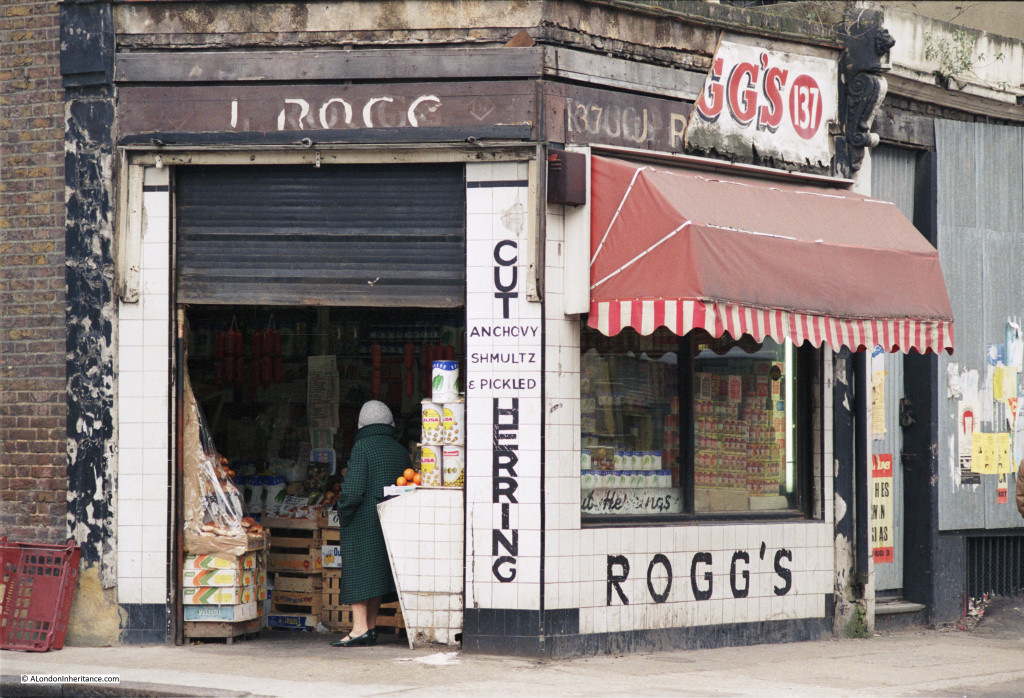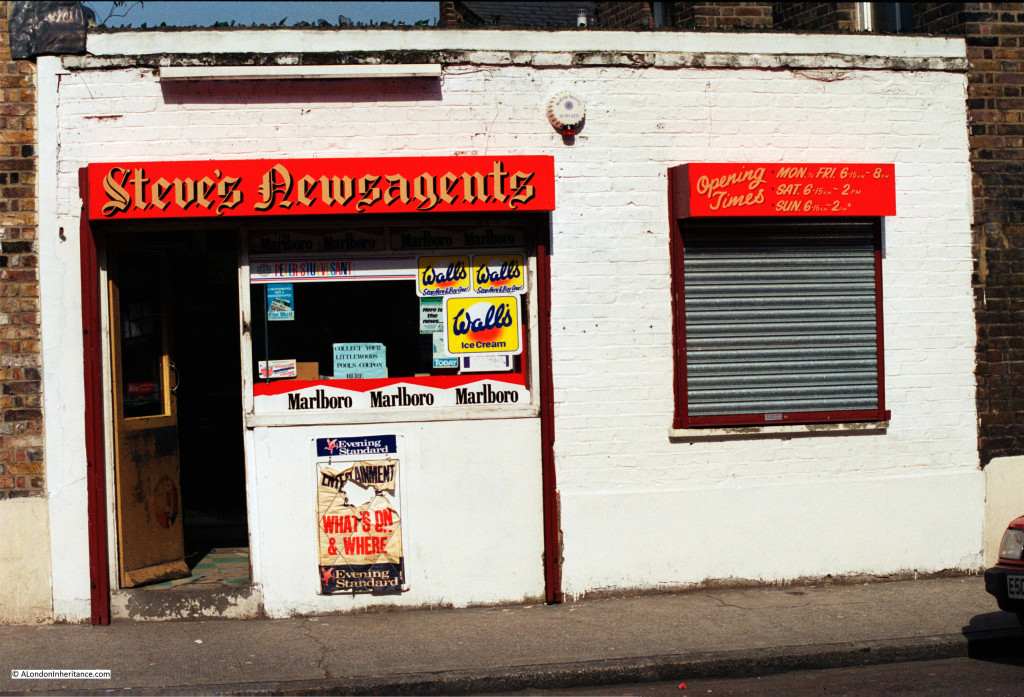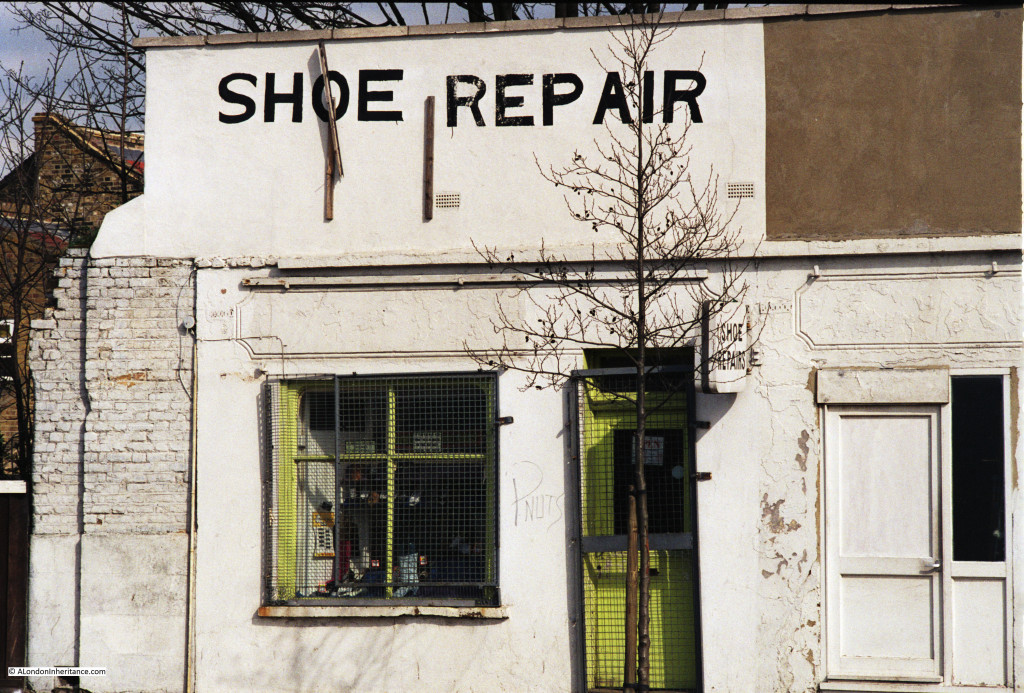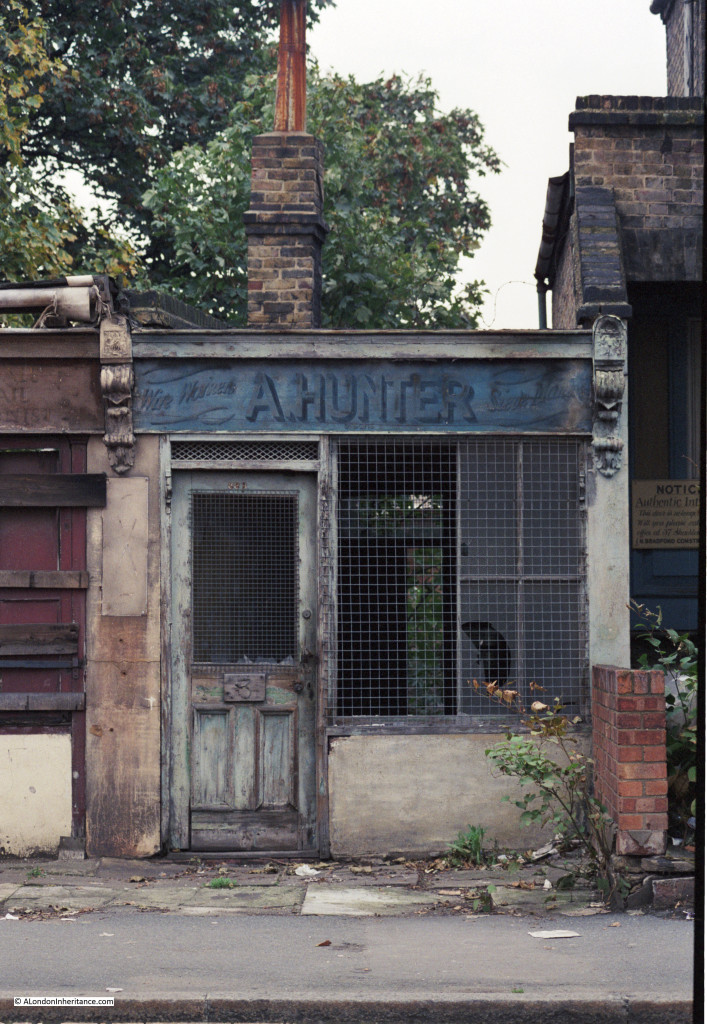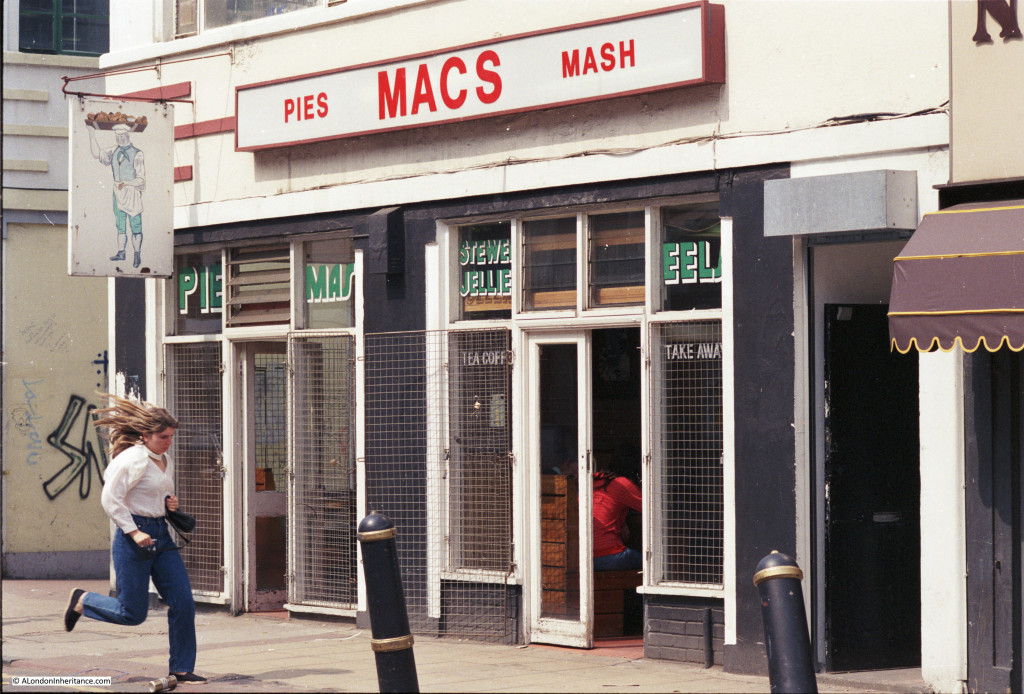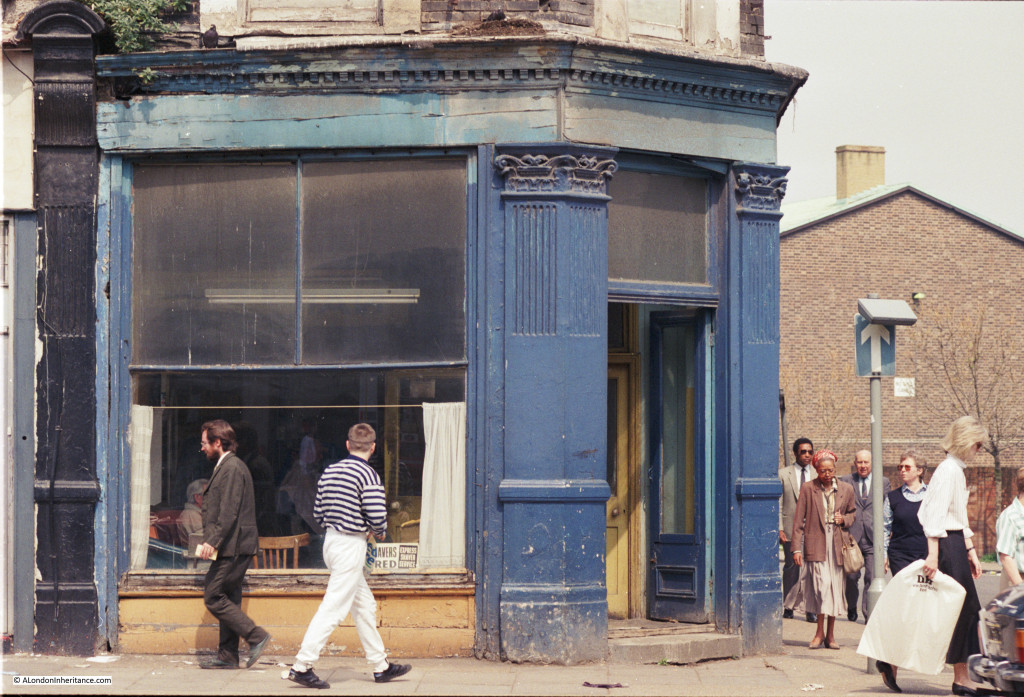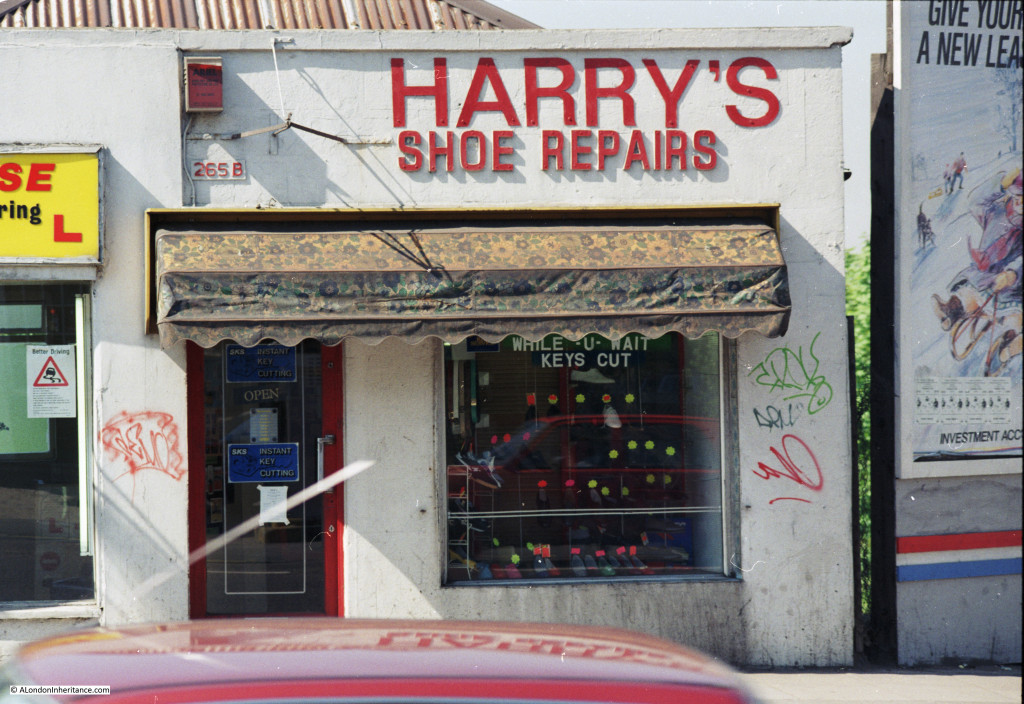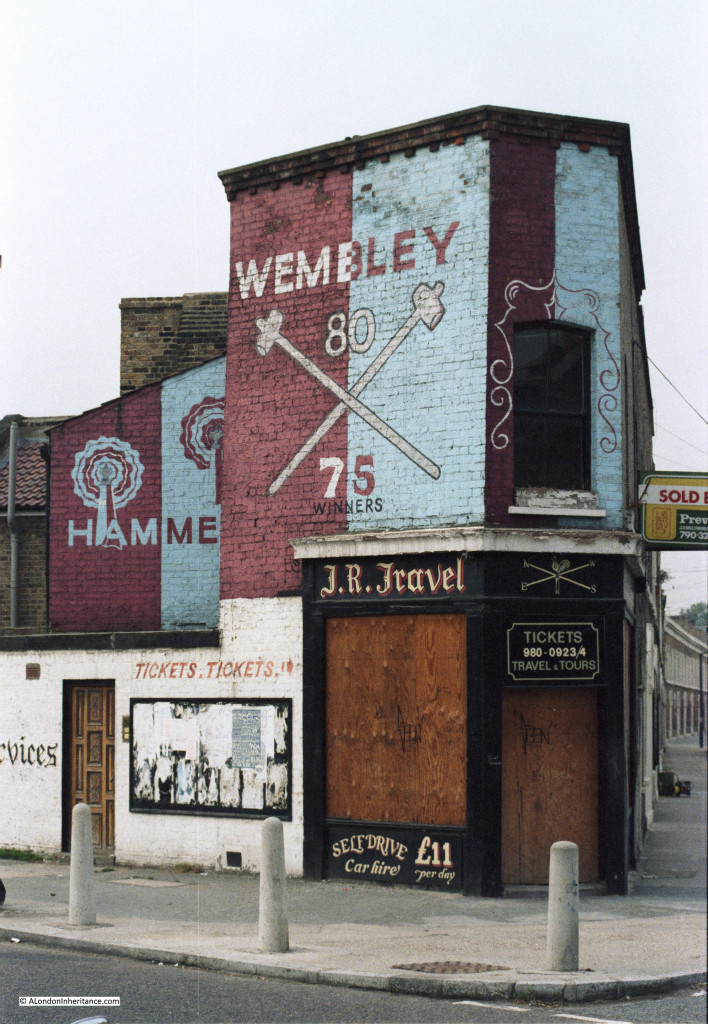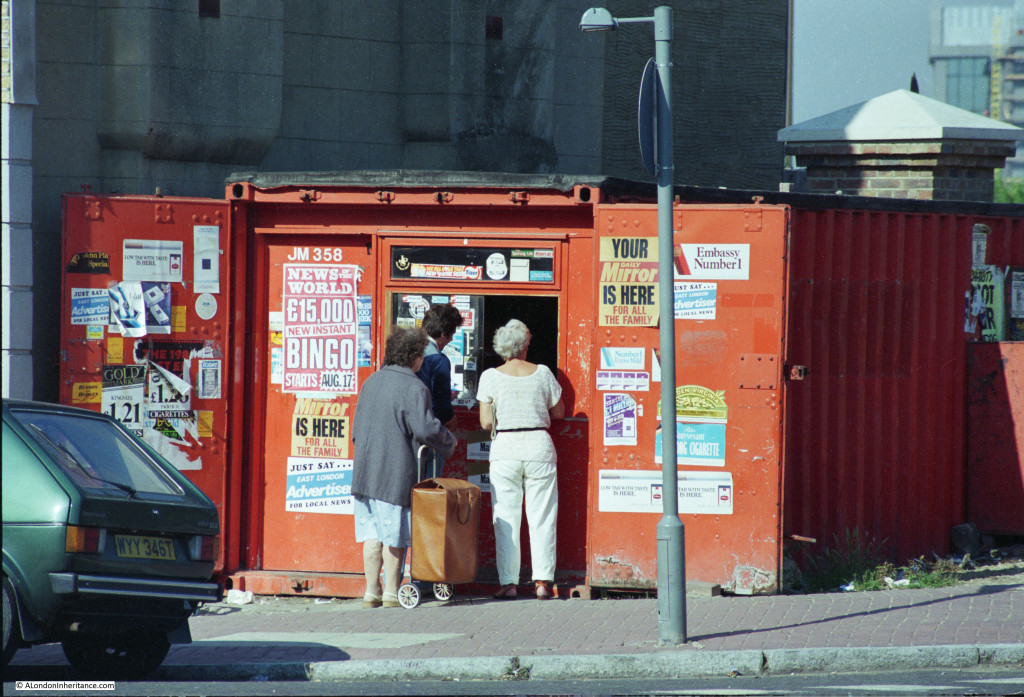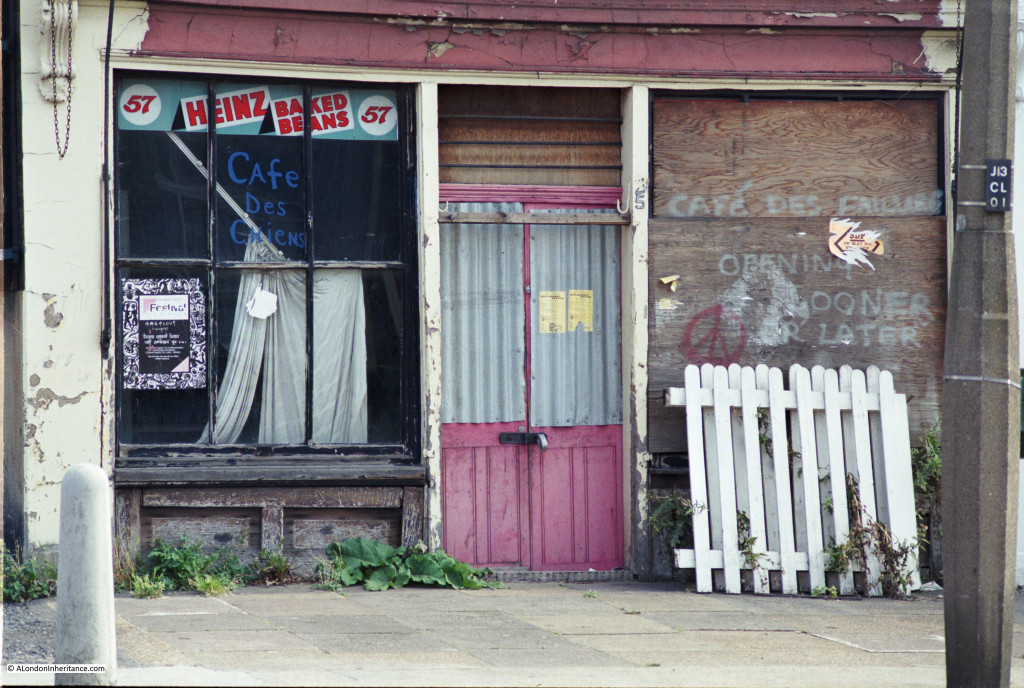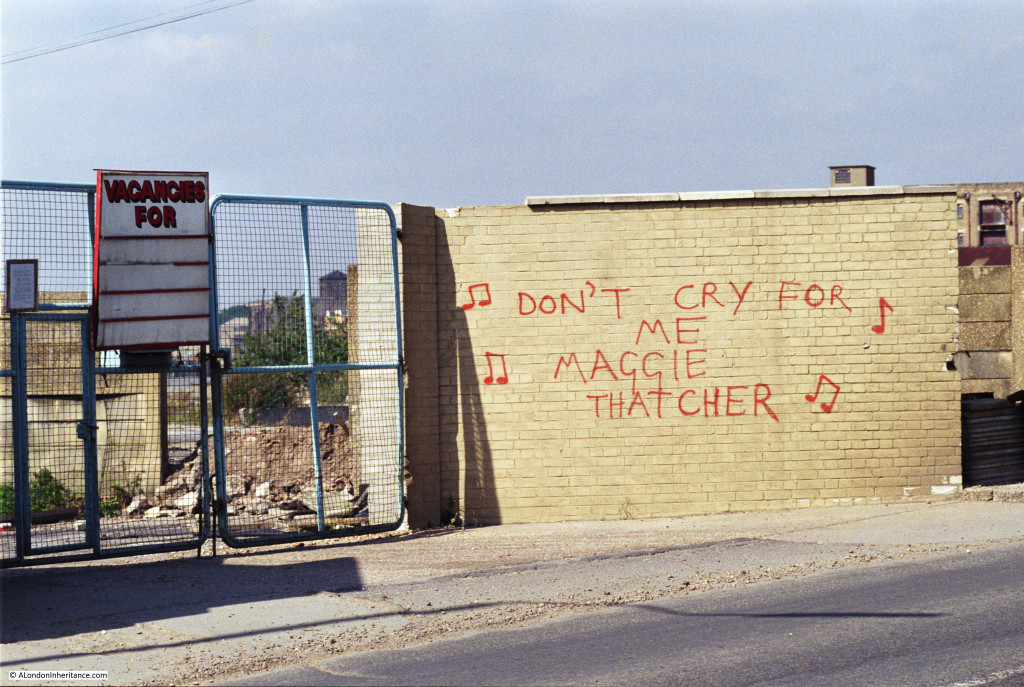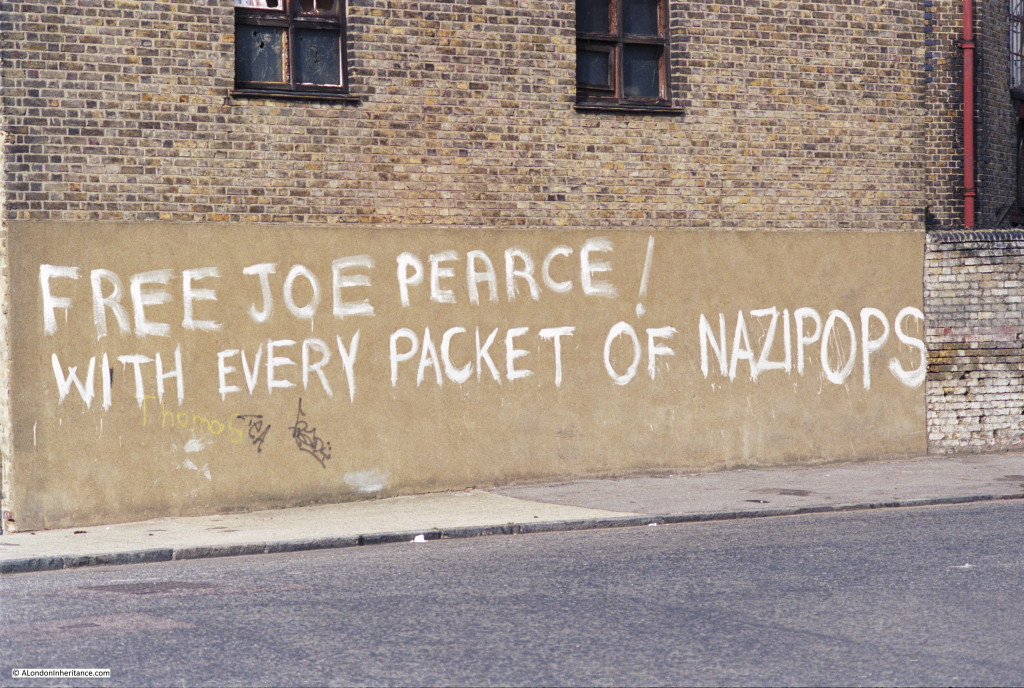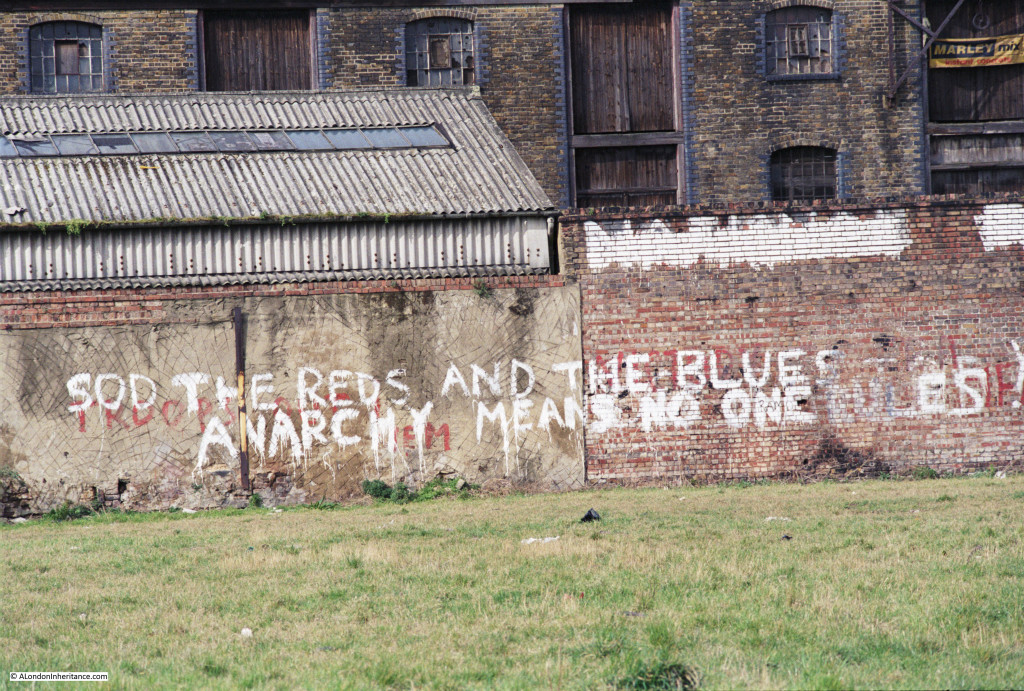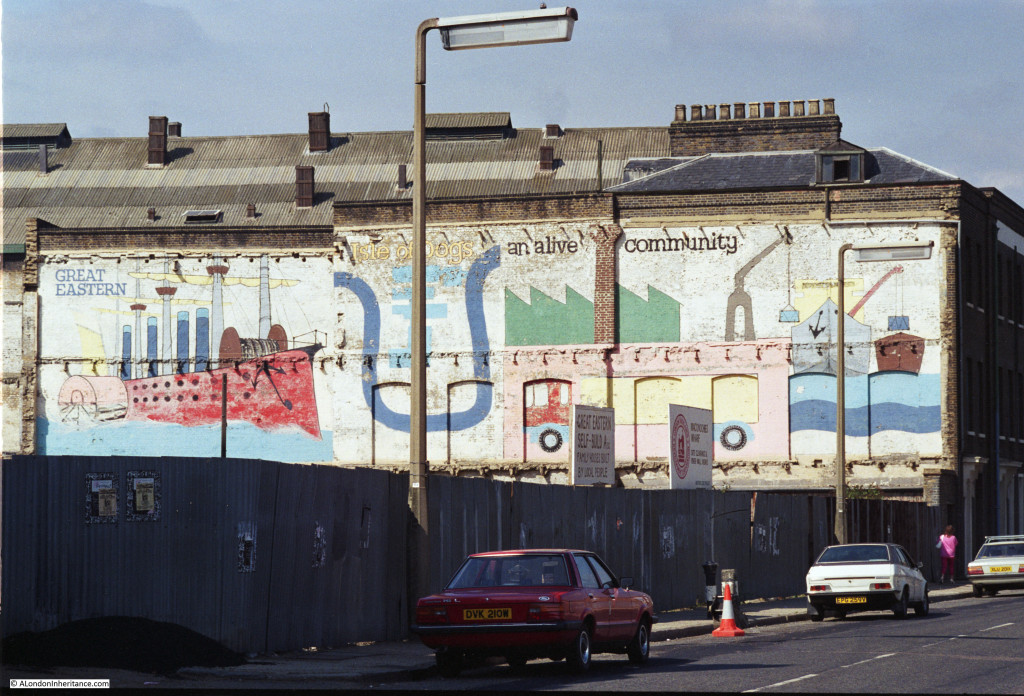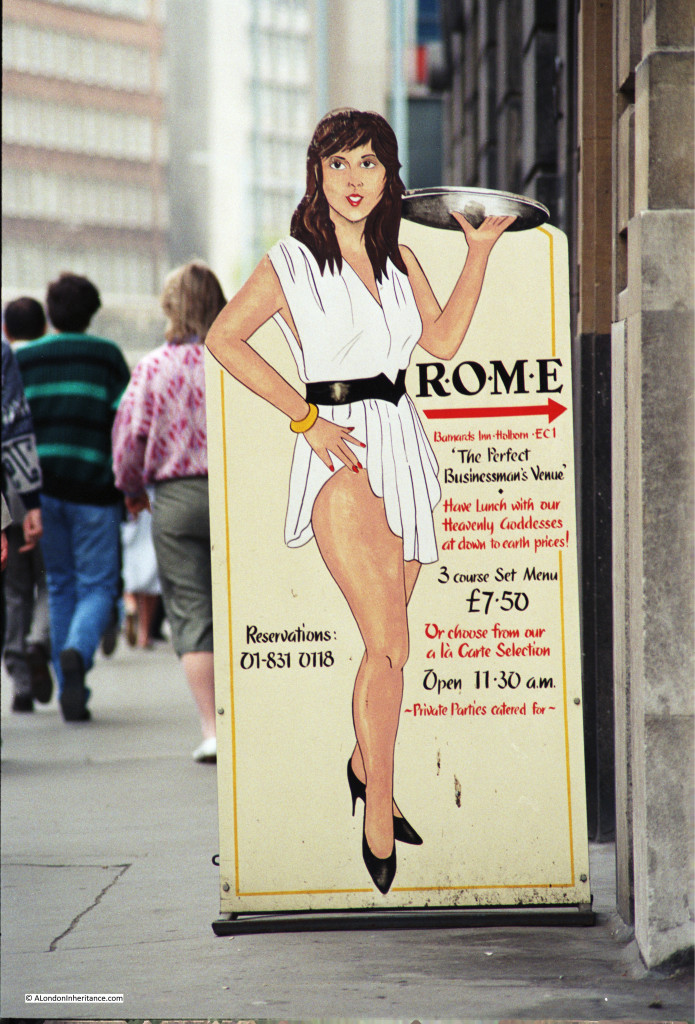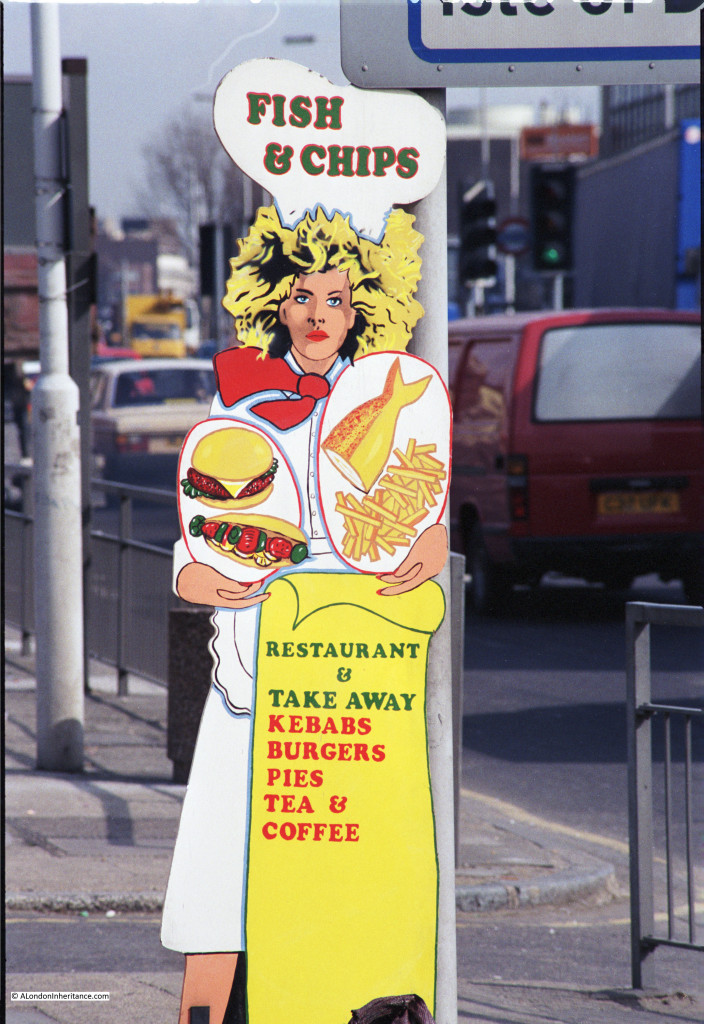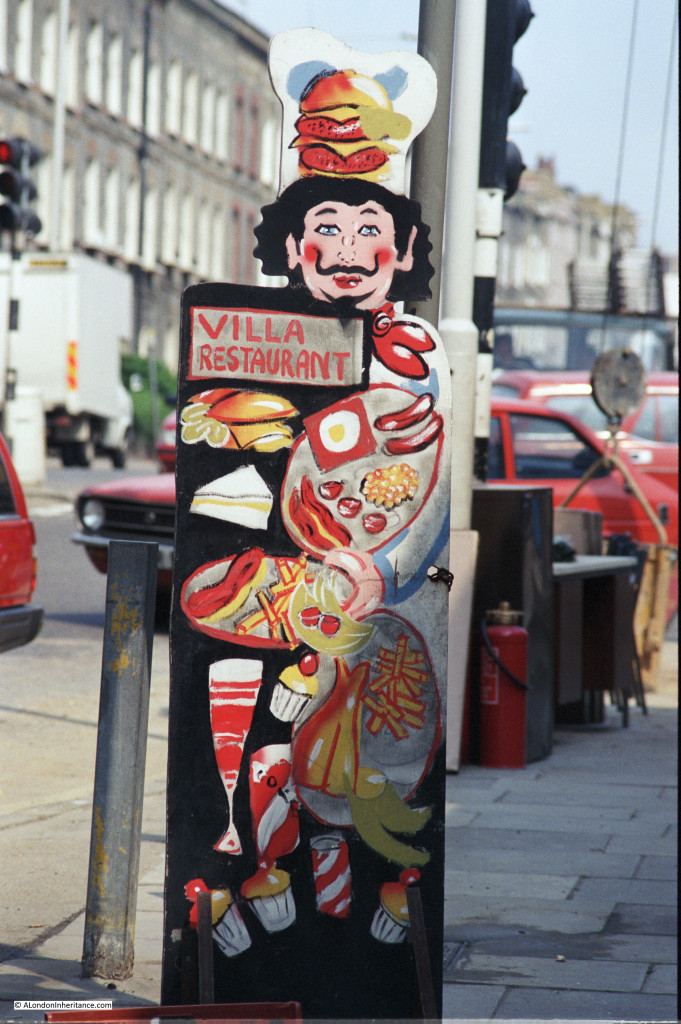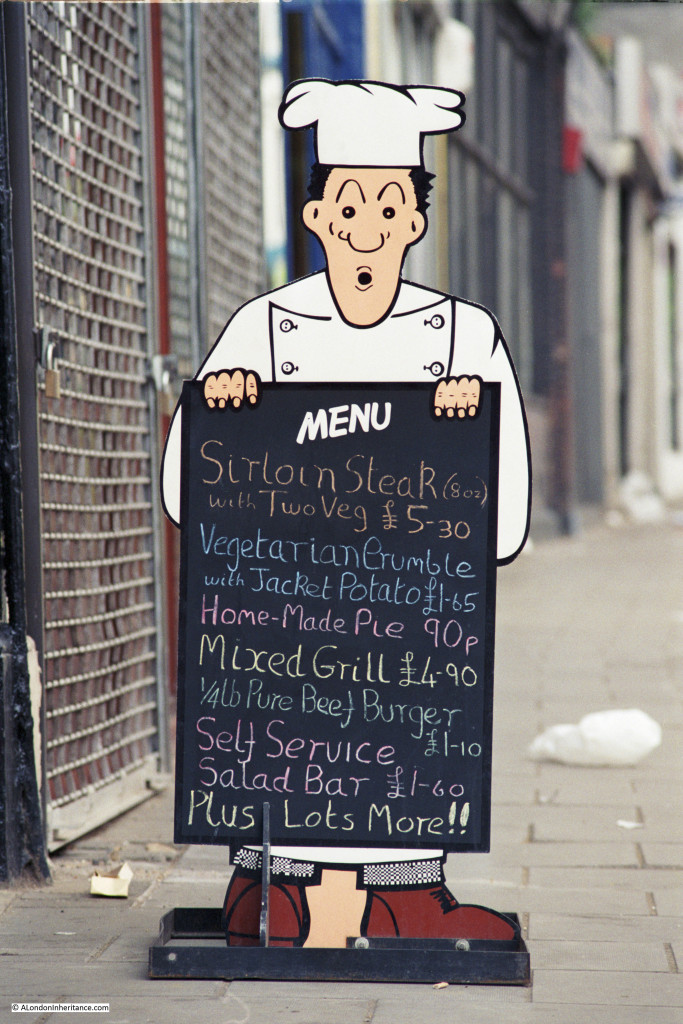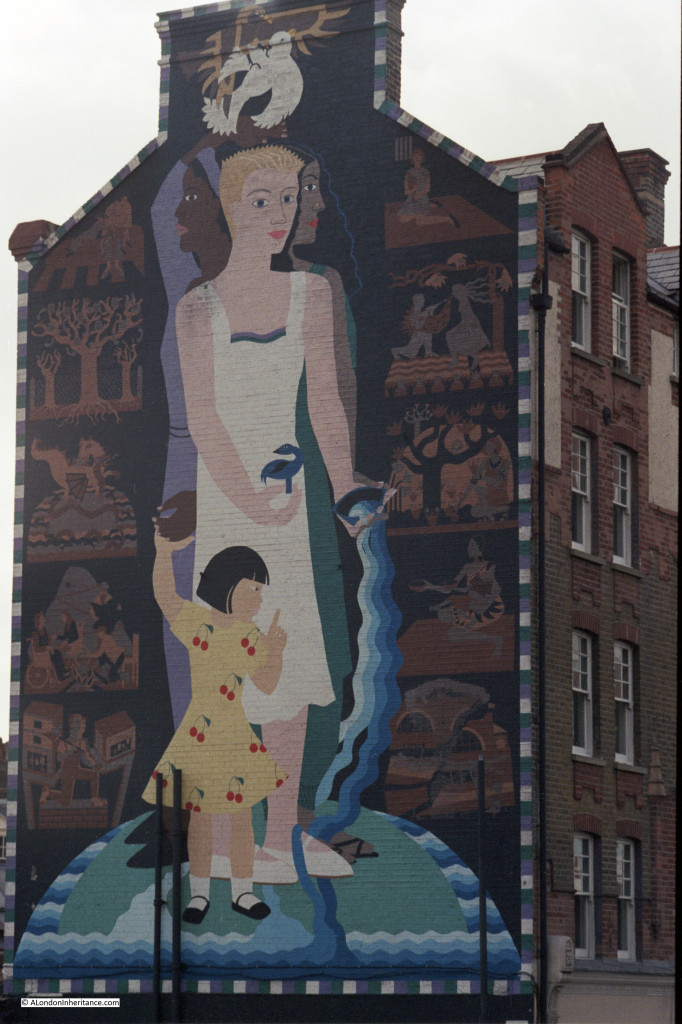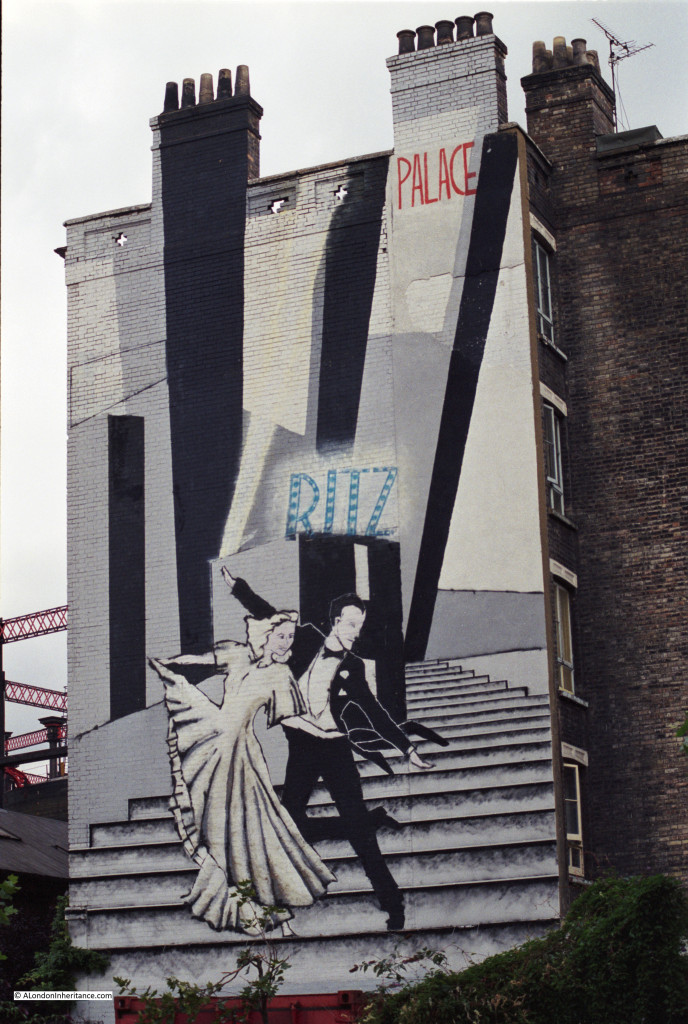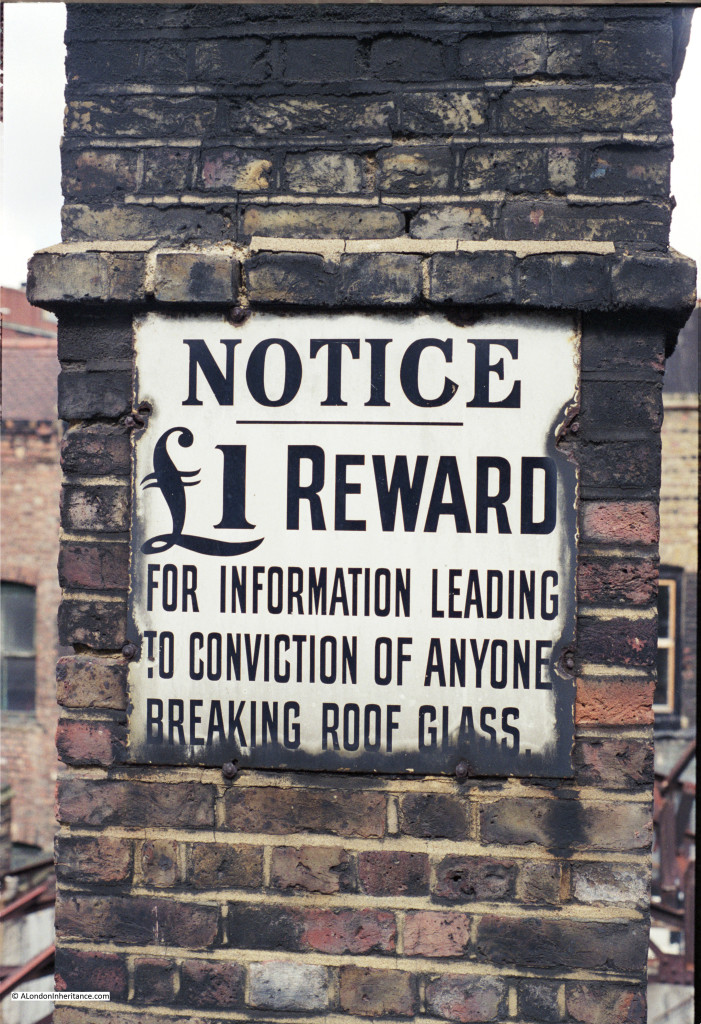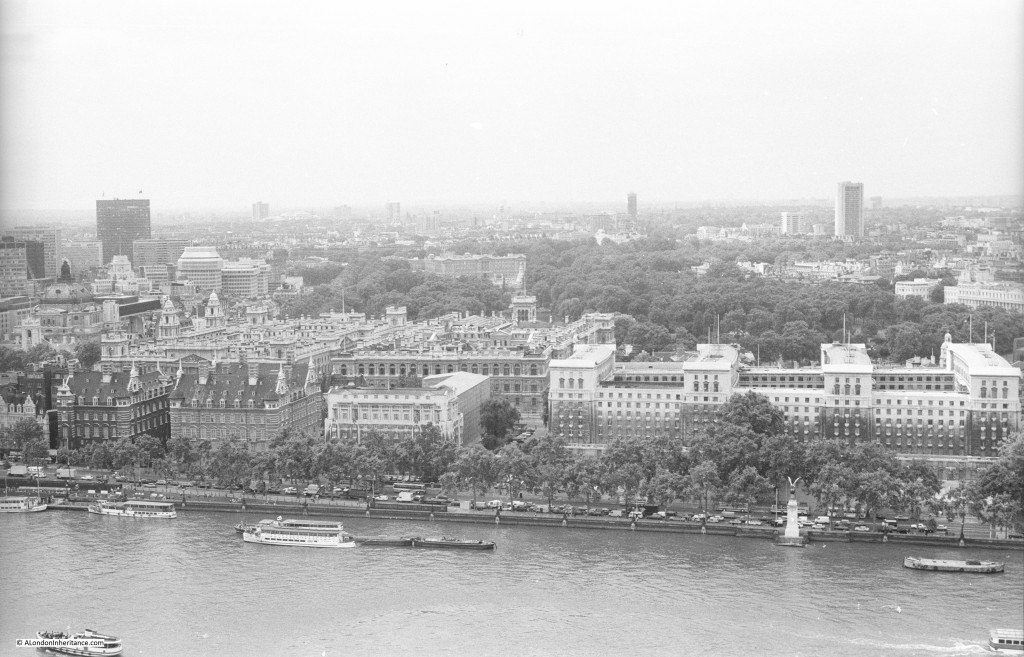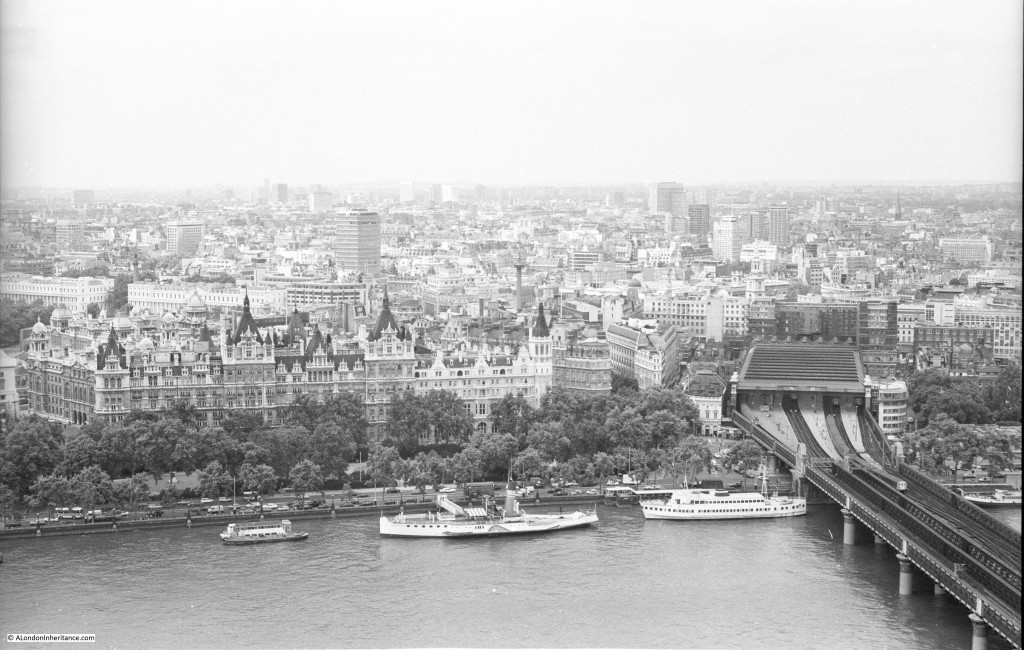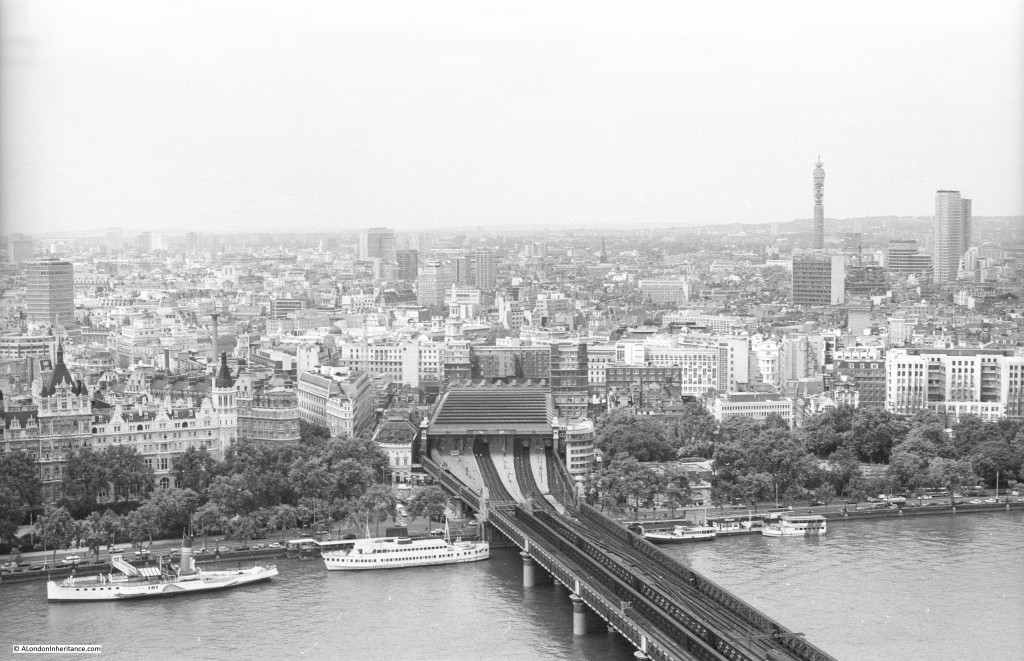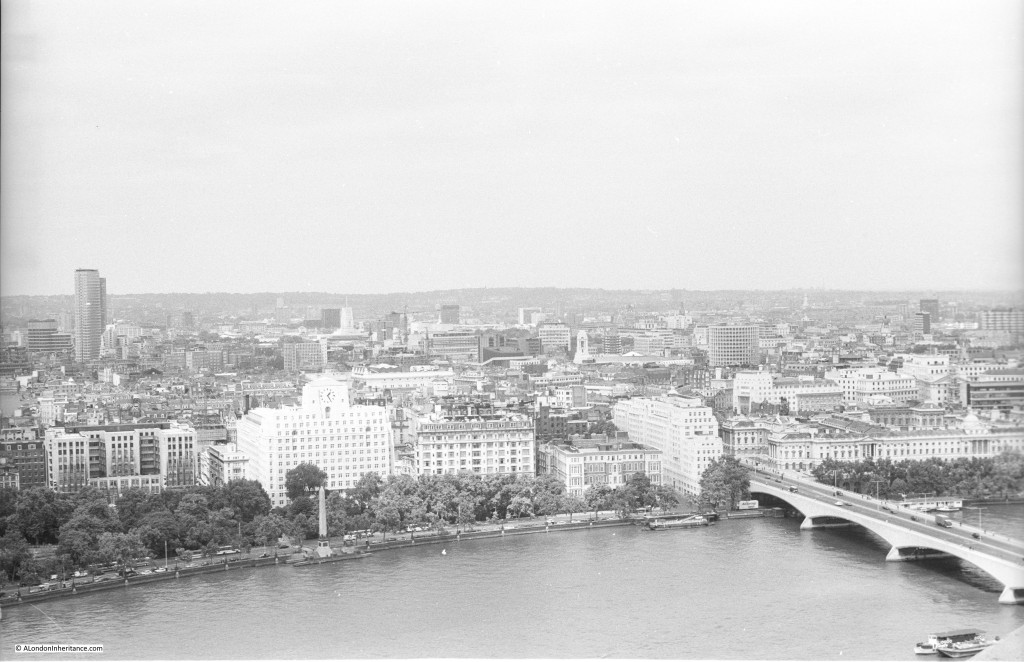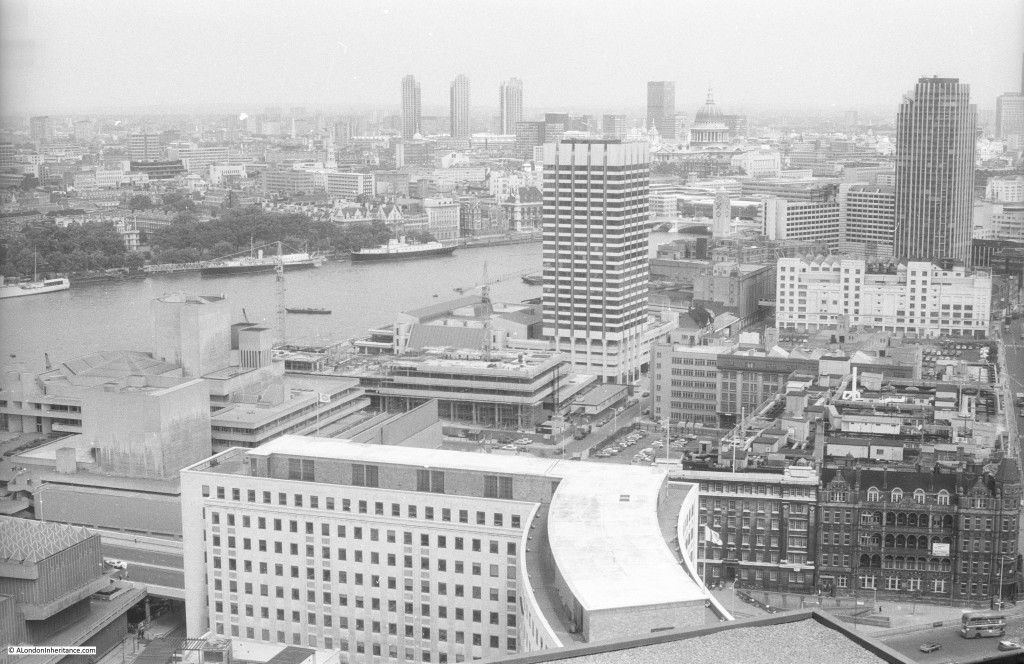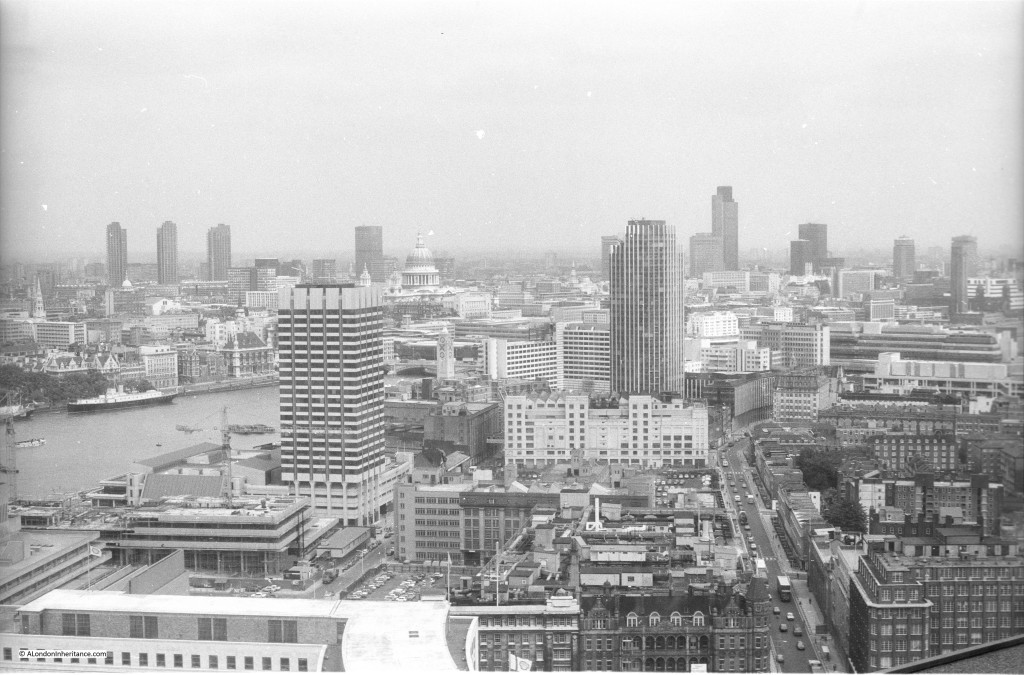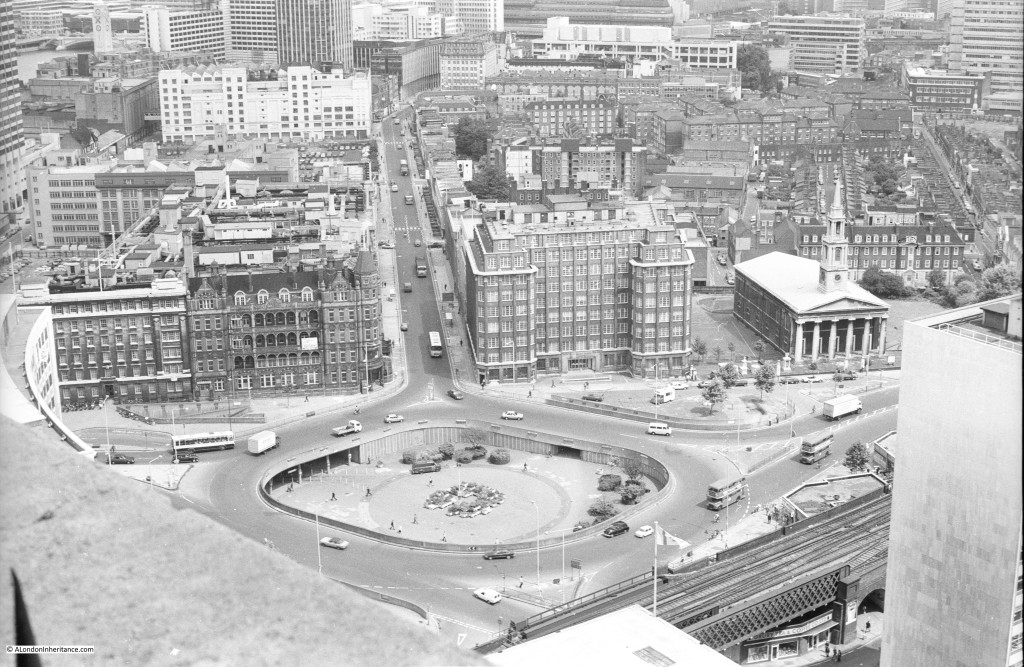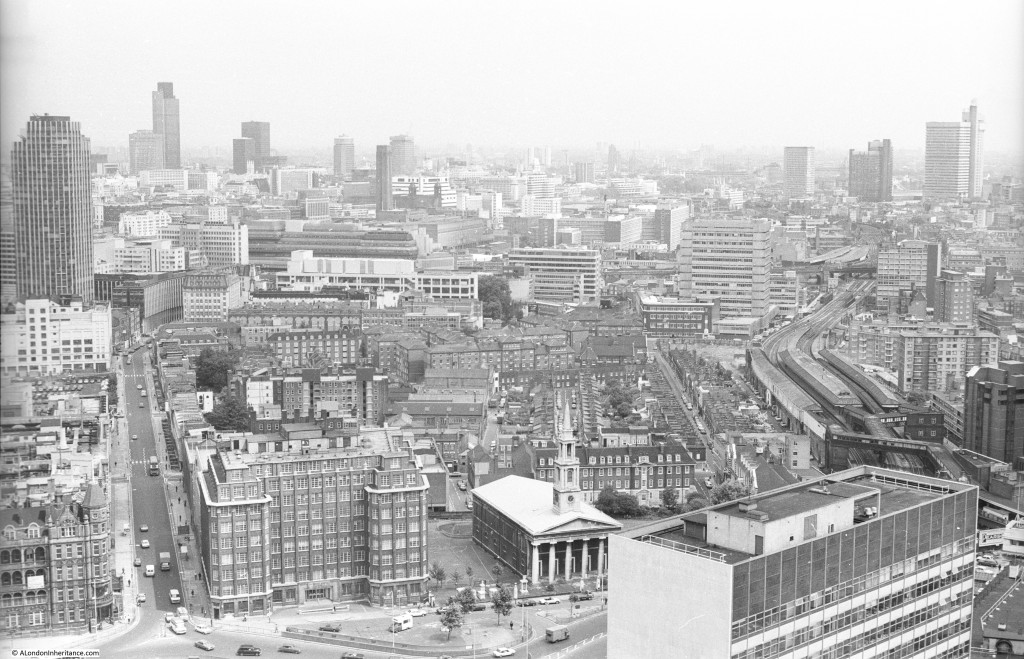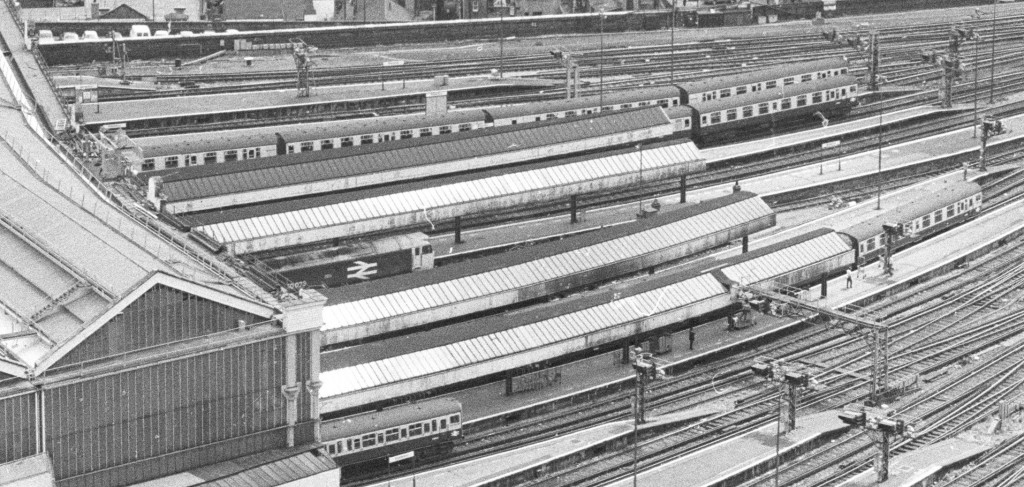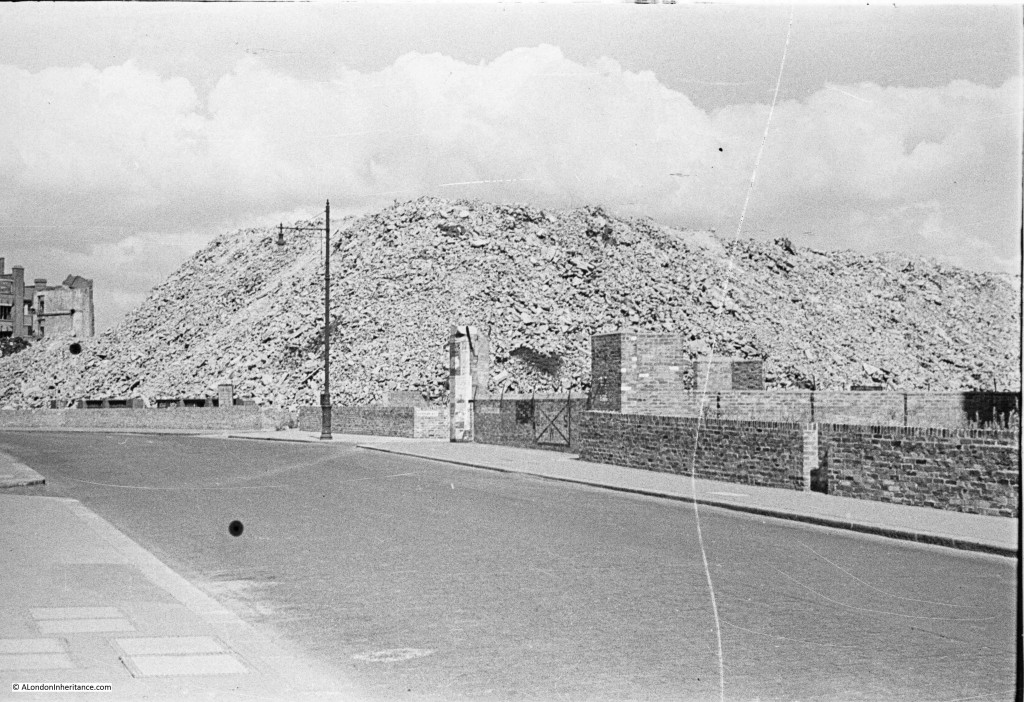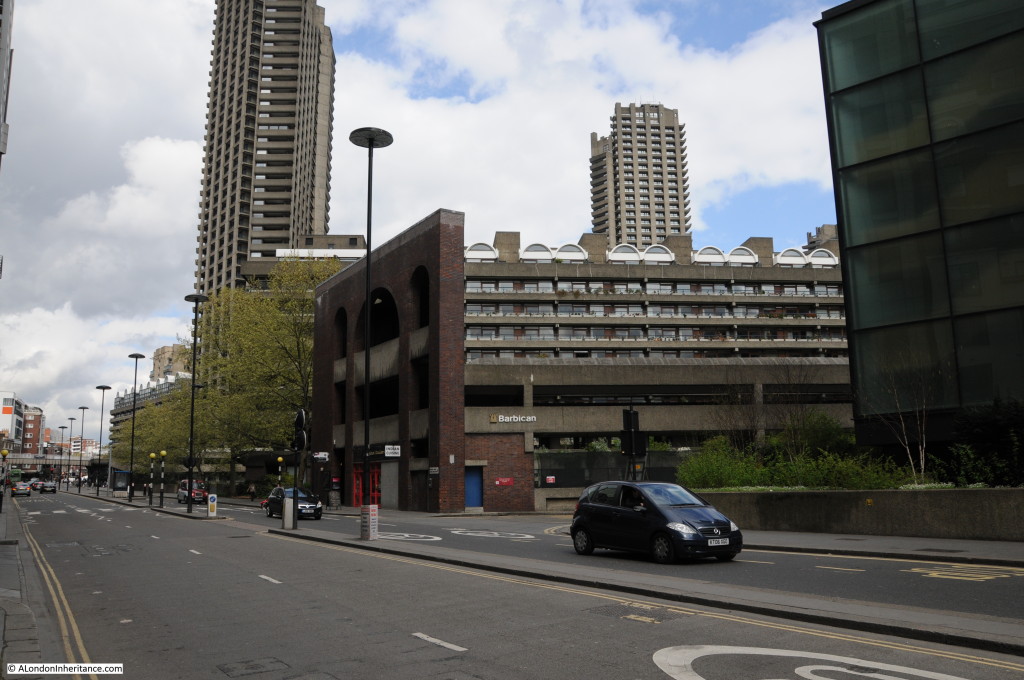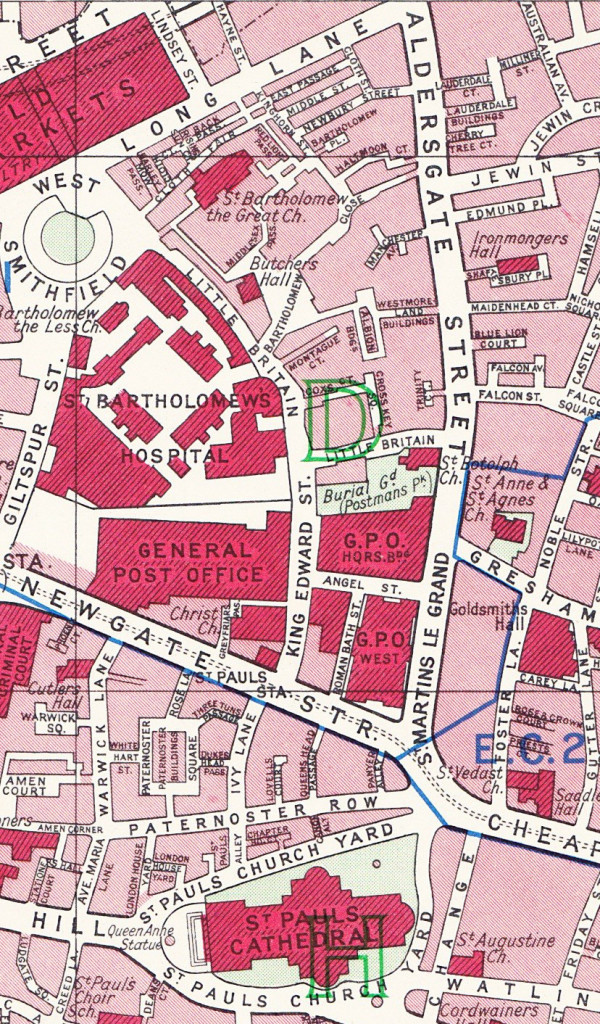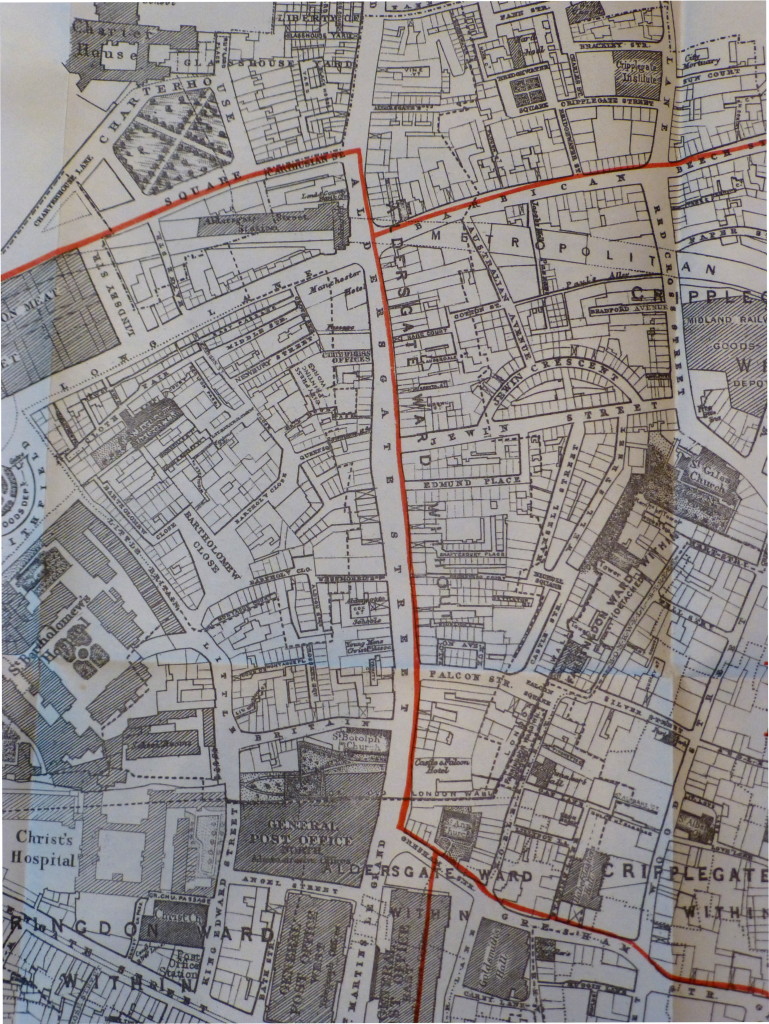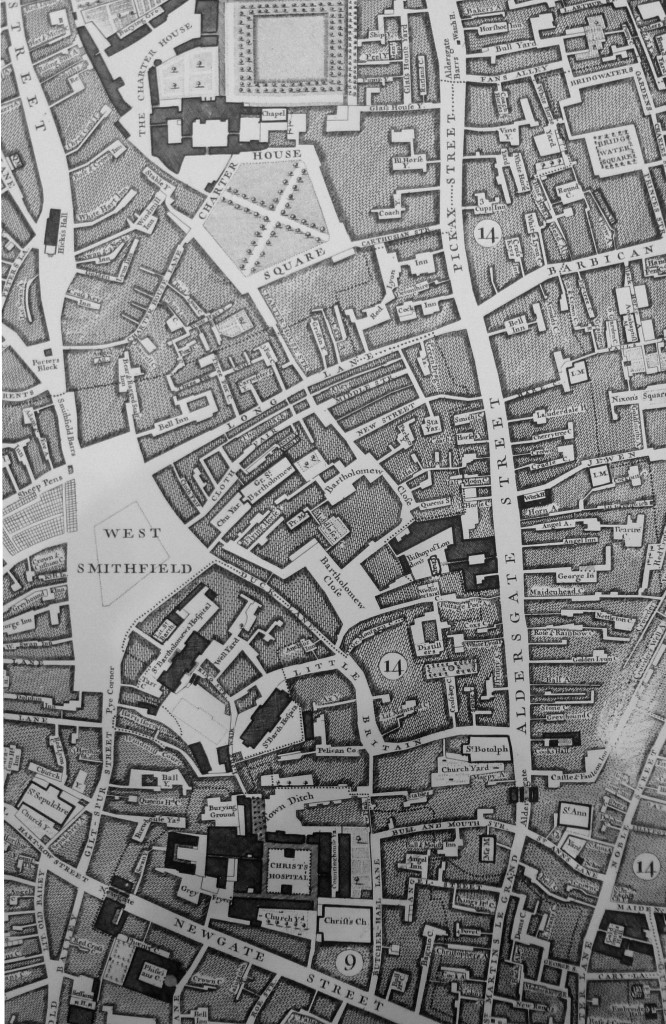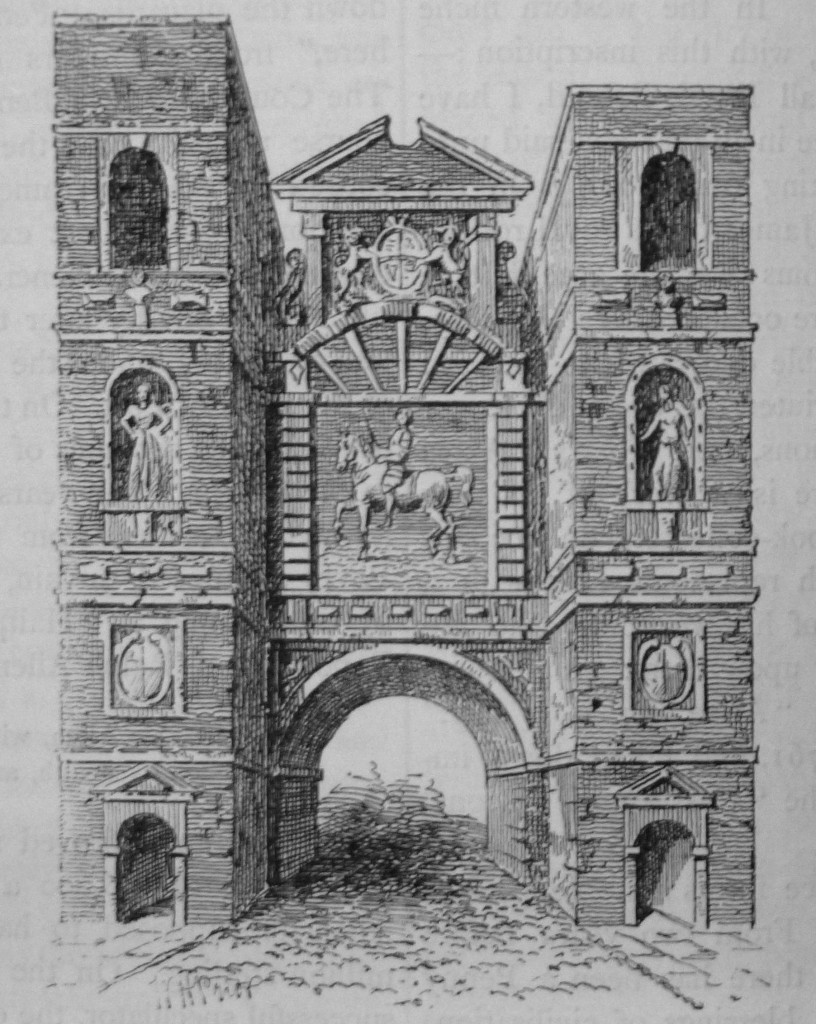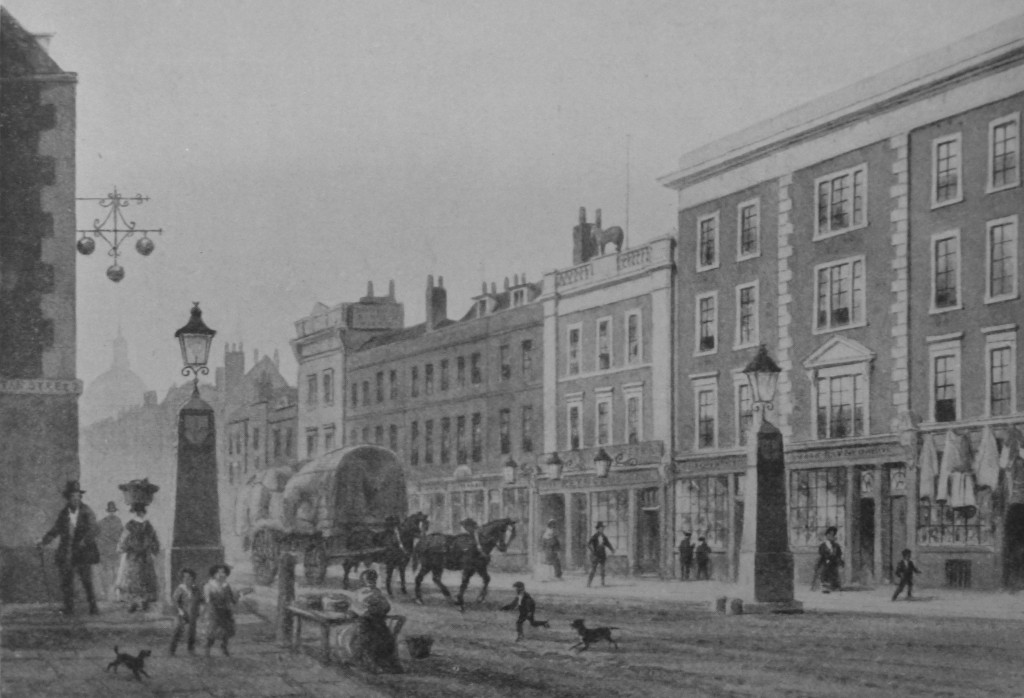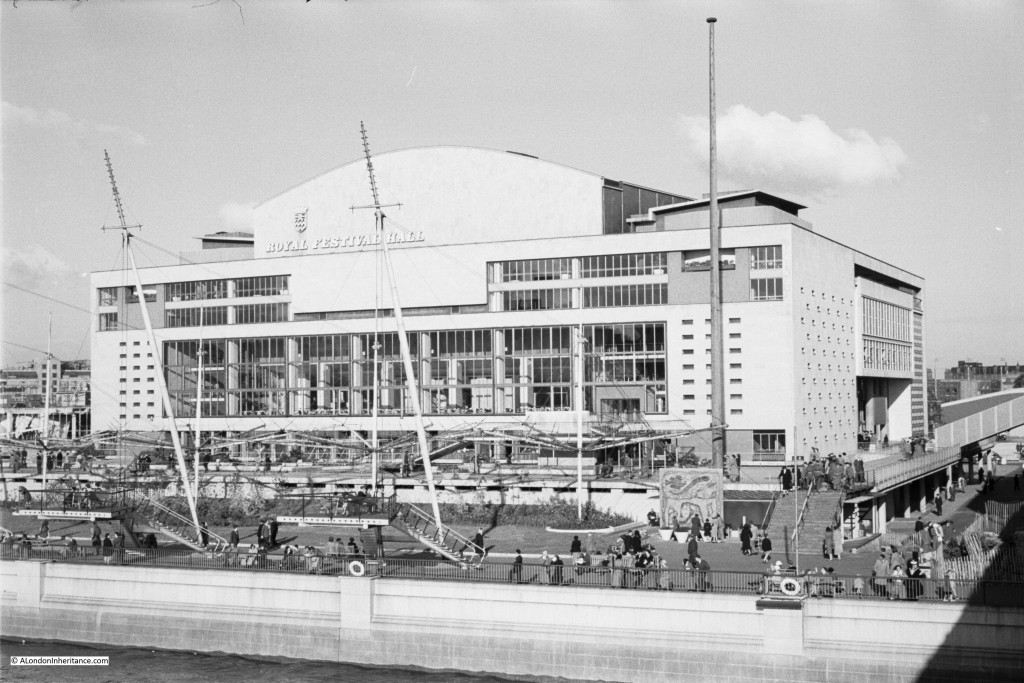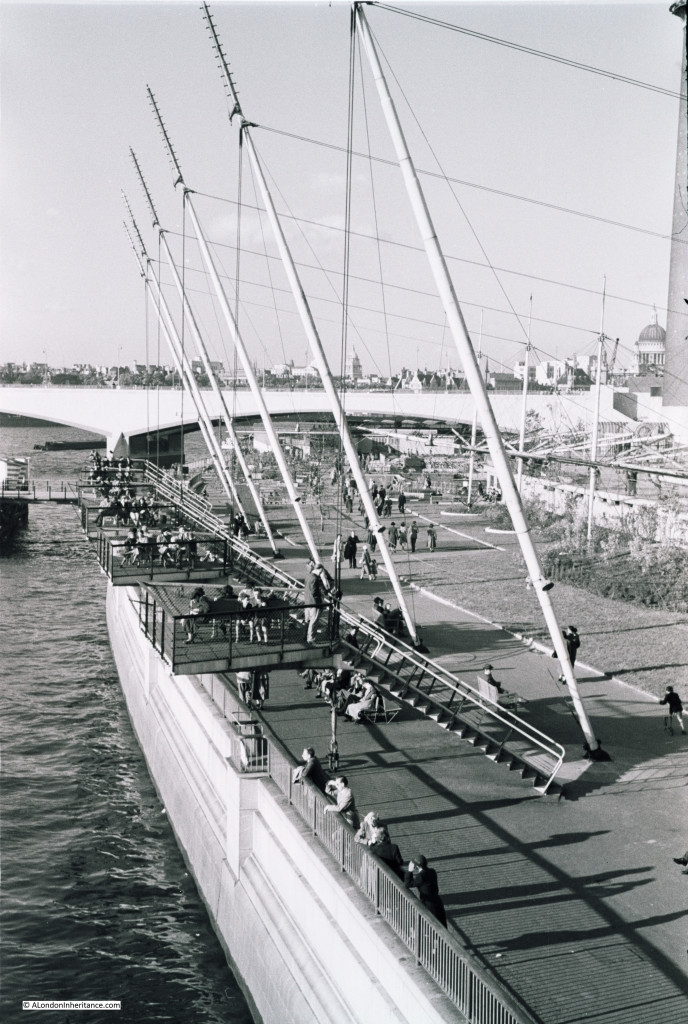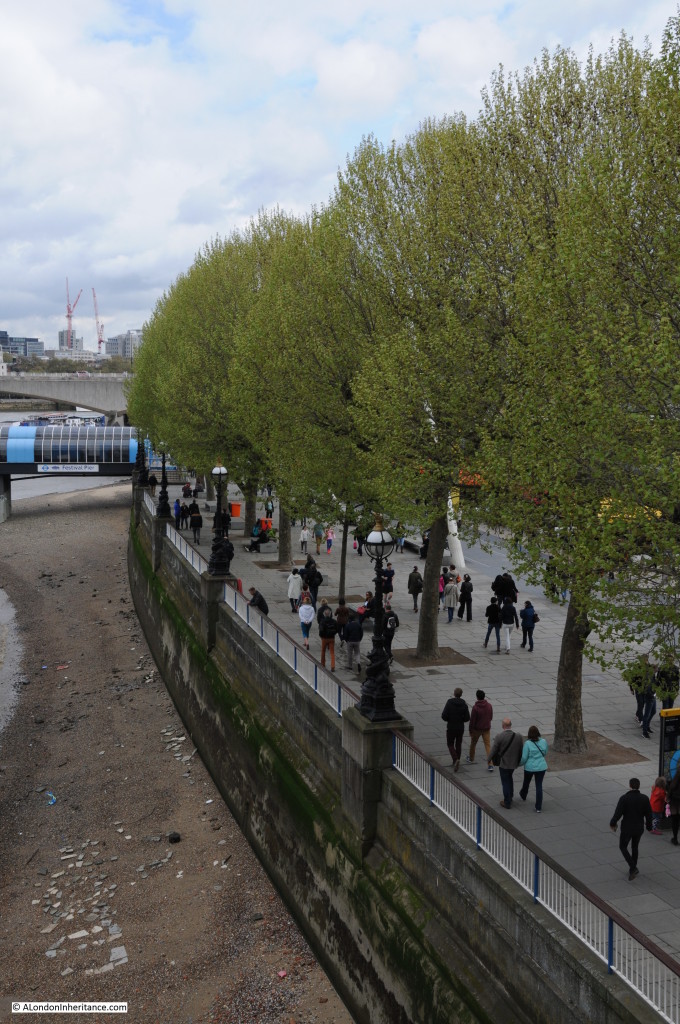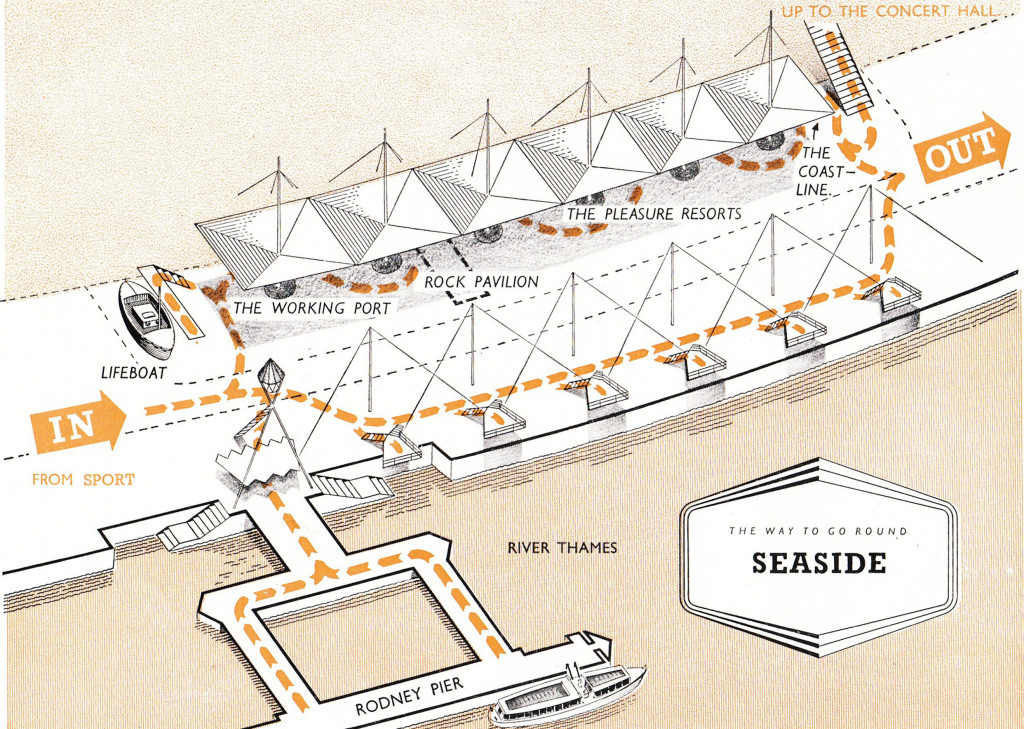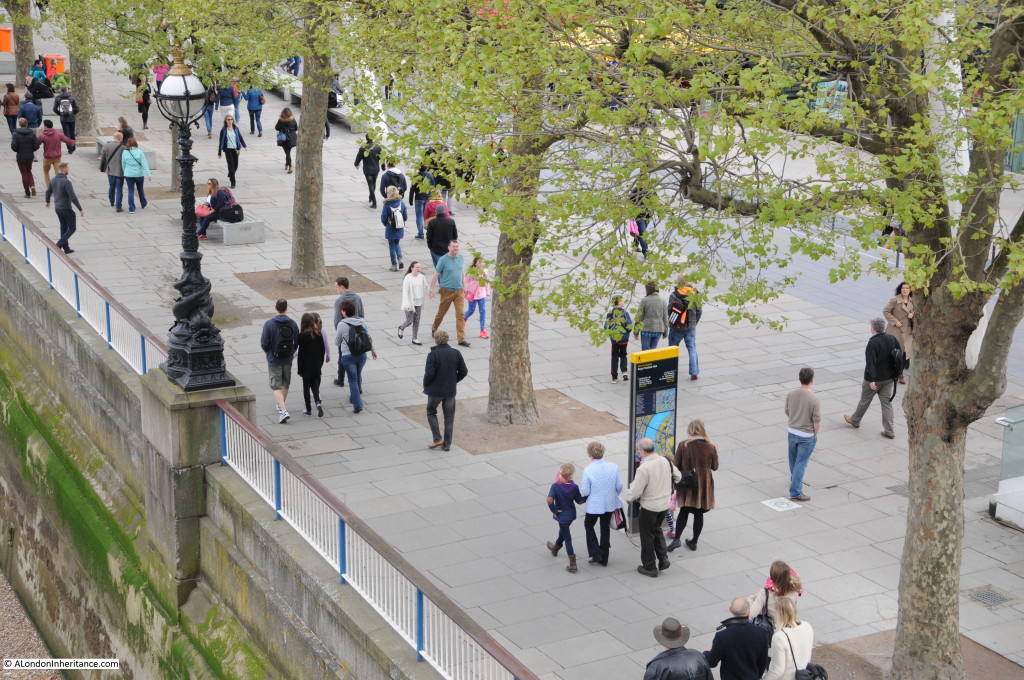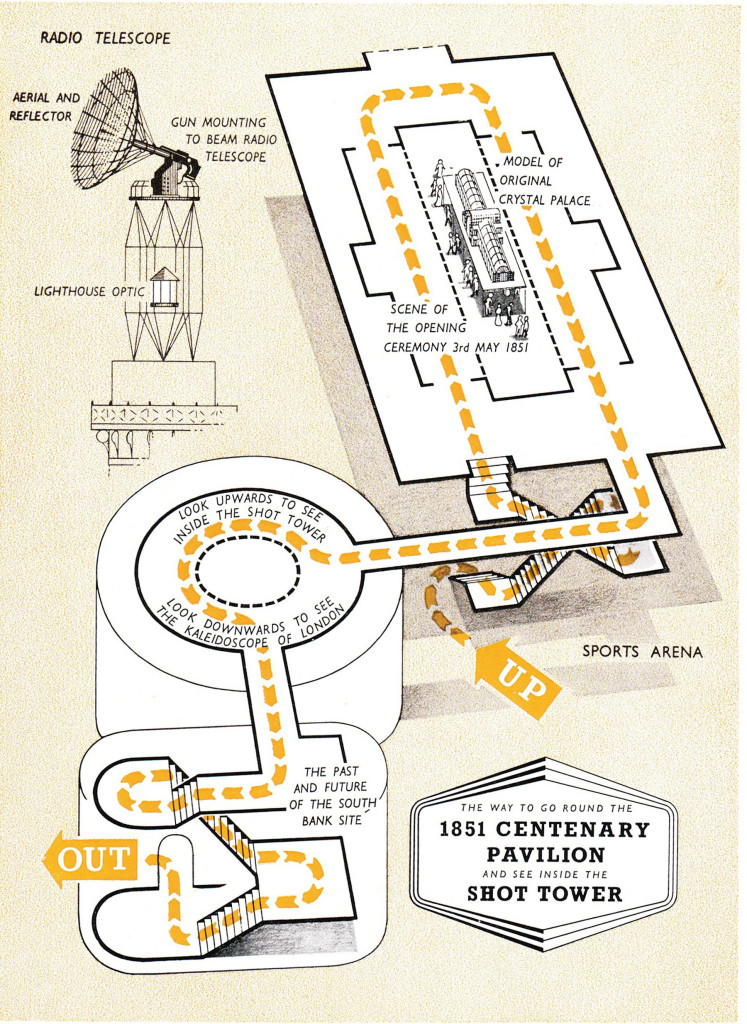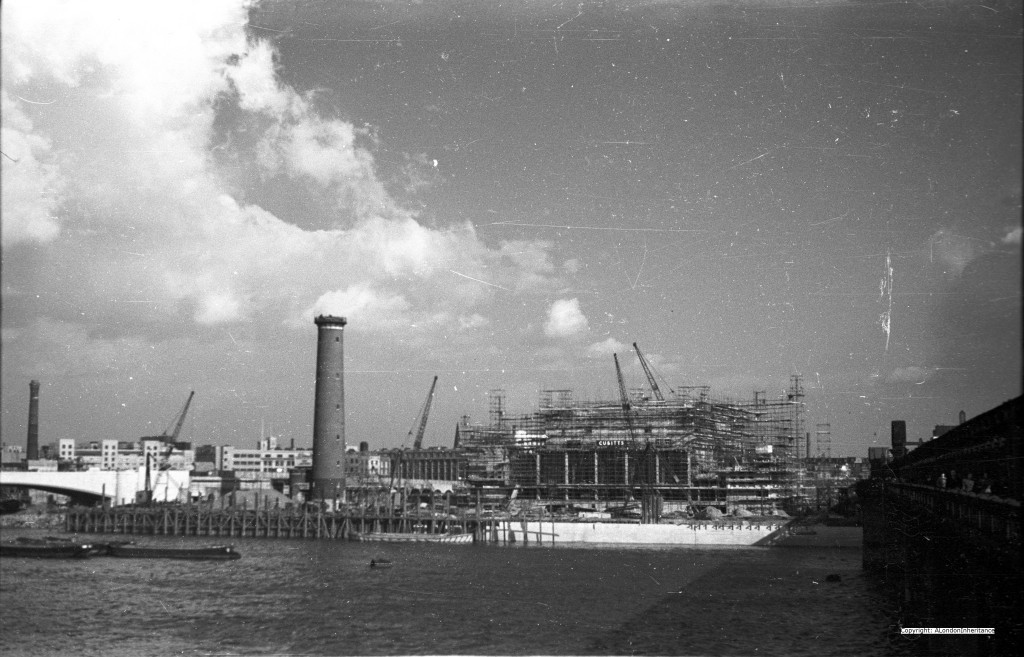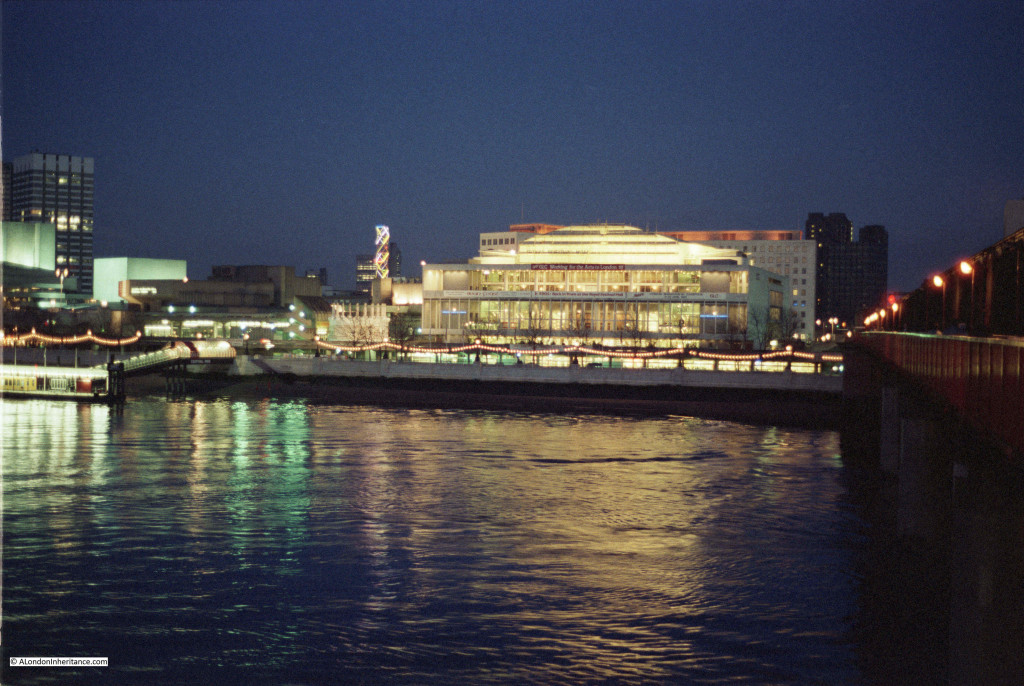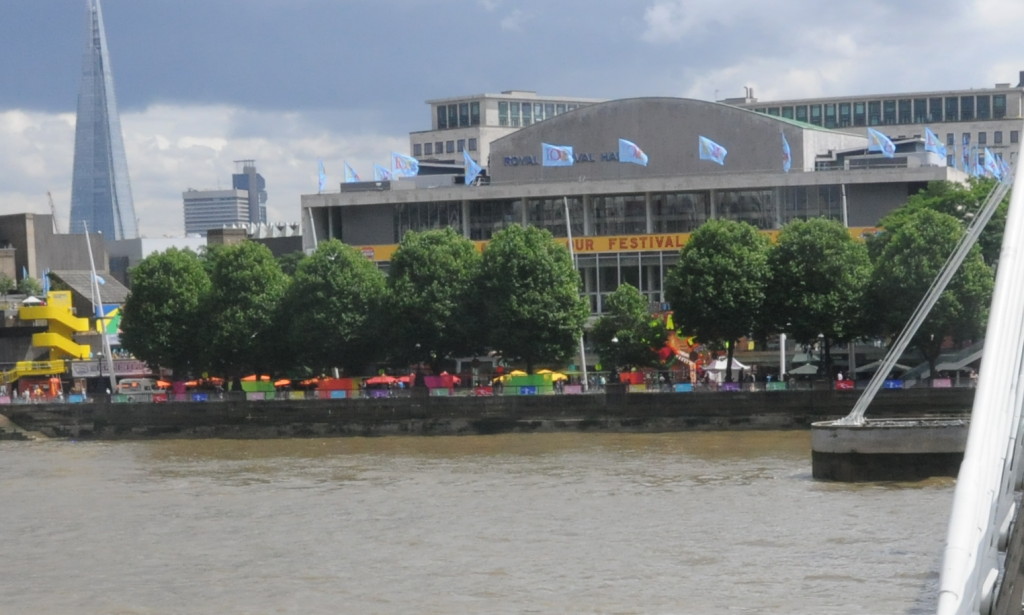Friday, 8th May was the 70th anniversary of Victory in Europe Day, or VE Day, the day in 1945 when the war in Europe officially came to an end. There are plenty of photos and film showing the celebrations in London on the day and throughout the night. The lights are starting to come back on and crowds throng the West End.
Apart from being evacuated for a couple of weeks at the very start of the war, my father lived in London throughout, in flats which still exist, just off Redhill Street in Camden. As well as a large collection of photos, he also left a detailed account of his experiences in London during the war. Written shortly after, these tell of the horror and also the sense of adventure that comes from the perspective of someone growing up in London.
His account finishes with a few paragraphs covering VE Day, written from the perspective of someone who has spent all their teenage years in London during the war, and for that generation, VE Day meant not going back to normal, but rather a future with plenty of uncertainty.
I decided to take a walk on Friday night and follow his footsteps exactly 70 years after his walk through London on VE Day, 1945, but before my account, the following is how my father saw VE Day on the 8th May 1945:
So now the long war was finally over, in Europe at least, which to many seemed the real war. Locally, as throughout the country preparations were quickly made for a celebration. Trestle tables magically appeared, placed end to end in the courtyards beneath the blocks of flats, where they could be fitted in between the surface shelters and the bicycle sheds, for a grand children’s party. Similarly, flags and bunting appeared at windows and were strung between balconies, reminiscent to me of my last children’s party, for the Coronation of 1937. Indeed, it was clear that cardboard cut-outs of their Majesties, together with slogans of “God Bless The King And Queen” had been safely stored since then.
Elsewhere bonfires in the streets were made ready for the evening of the 8th. A huge bonfire was prepared on part of Cumberland Market, the local boys dragging old doors and any timber they could lay their hands on to add to the pile.
As for myself, I had made arrangements with my friend Gus, whom I had known since infants school days, that on that evening, we would make our way to the West End to watch the celebrations.
Outrageous it may sound, but I didn’t feel like celebrating, and it became clear that Gus felt the same. The war had begun when I was eleven and, now being seventeen, the whole of those six years, despite every hardship, had been the only real and normal life that I could recognise, for I was a child before September 1939. therefore peacetime presented a prospect of the Great Unknown, in which the unity of wartime would vanish.
So it was that I felt a complete outsider, observing only the dancing, singing and general merrymaking taking place in the West End. Servicemen would now rightly look forward to a return to civilian life, with the promise of a better life than the one they had left; but with the war in the far east not yet over, Gus and I had to await our call-up to the services and I, as a temporary Civil servant, would be without a job to return to, if and when I did.
Darkness had fallen by the time we had managed to reach the end of Regent Street, where the crowds were vast and well lit by the unaccustomed brilliance from the lights, made even brighter by roving searchlights picking out the revellers for the benefit of the cine cameras. On one of the balcony’s overlooking Piccadilly Circus, the musical star, Zoe Gail appeared, dressed in top hat and tails to sing “I’m Going To get Lit Up When The Lights Go On In London” which was rapturously received by the crowds.
However as observers, we eventually left the Circus, walking south along Regent Street to Waterloo Place. Here we came across the Athenaeum Club in Pall Mall, which to me presented the most spectacular illumination of the night. The building, constructed in Ancient Greek style, had been freshly painted a pale yellow colour and subtly lit. The balustrade bordering the Club surmounted by torches. Each had been filled with oil or similar and lit, producing a spectacular dish of flame, adding to the warm light bathing the building.
And so we made our way through central London taking it all in, the lights, the shop windows, the decorations and individual celebrations, until we found ourselves in Chiltern Street, which runs parallel with Baker Street. Celebrations at the London Fire Brigade building were well underway. The station gates were wide open and in the drill yard blazed a large fire. In one corner a piano was playing old favourites, while several elderly ladies performed a nifty “Knees Up Mother Brown”. We didn’t join in the dancing or sing any songs, but the beer and food was welcome, and I felt at home in the fire station.
Now the early hours of the morning, V.E. Day was over. we made our way home both wondering what life held in store for us.
Preliminaries to the 1945 General Election being contested by our great wartime leader, Winston Churchill, for me set the seal on the end of an era. I watched Churchill campaigning at Mornington Crescent, Camden Town, his open car surrounded by a rather hostile crowd. The great man was standing, raised hat in his left hand, cigar in his right. from an onlooker came a cry “Ere, Winston, try one of our fags!” followed by a Woodbine pack hurled at Churchill who turned the other cheek as his car drive on.
The future must have seemed very uncertain at the time. I suspect that he “felt at home in the fire station” was due to his grandfather, my great-grandfather being the Superintendent of East Ham Fire Station.
On Friday night, I set out from the West End to reach Chiltern Street by dusk and find out if the fire station was still there, and then walk back during the late evening to photograph the West End as it is now, very different to the same night 70 years earlier.
Turning off Baker Street and a short walk down to Chiltern Street, it was easy to spot the old Fire Station, the exterior looks much as it must have done when my father and Gus stopped here 70 years earlier, although now the building has a very different purpose. The building is now the Chiltern Firehouse, a bespoke luxury hotel and restaurant.
I took the following photo of the Fire Station as the light was fading on Friday evening. The original function of the building is very clear, the three large doors providing access to where the fire engines would have been waiting for a fast exit to the street.

Just to the left of the main building is the old drill yard mentioned in my father’s account. This also forms part of the Chiltern Firehouse and the original entrance still remains.
I stood for a while looking at what is a wonderful building, the architecture a clear statement of the standing in which the Fire Service at the time was held. As I waited, there was an almost constant stream of taxis dropping people off for either the restaurant or hotel and entering via the old drill yard entrance. Very different to the same place, 70 years earlier.
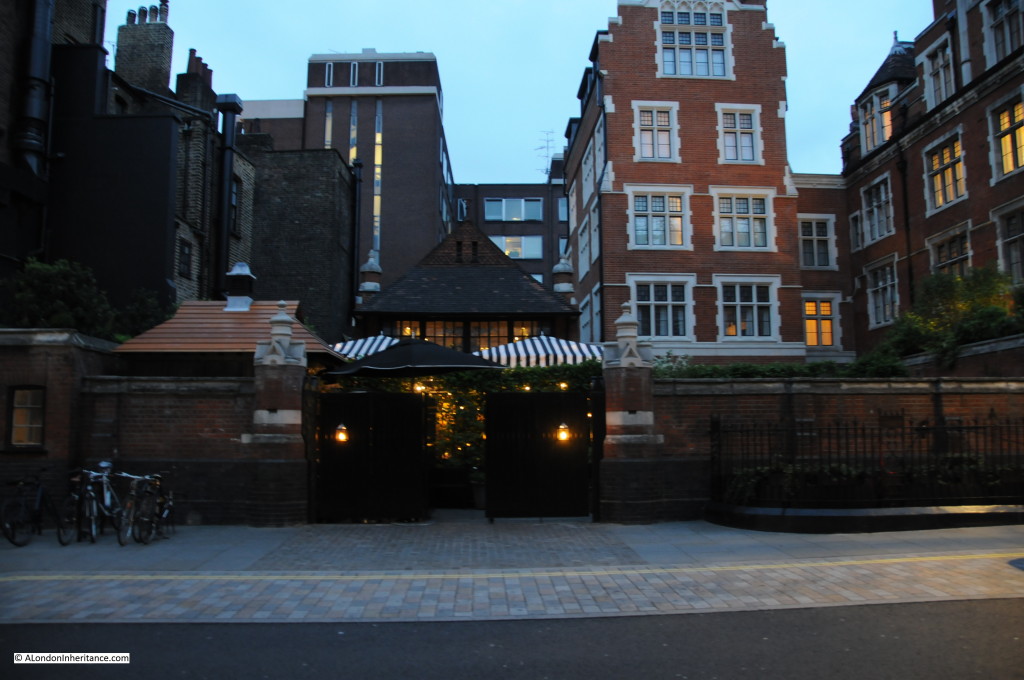 Pleased to have found that the Chiltern Street Fire Station building is still there, I then headed back through Manchester Square, to Oxford Street and then to the top of Regent Street.
Pleased to have found that the Chiltern Street Fire Station building is still there, I then headed back through Manchester Square, to Oxford Street and then to the top of Regent Street.
In Regent Street looking back up to Oxford Circus:
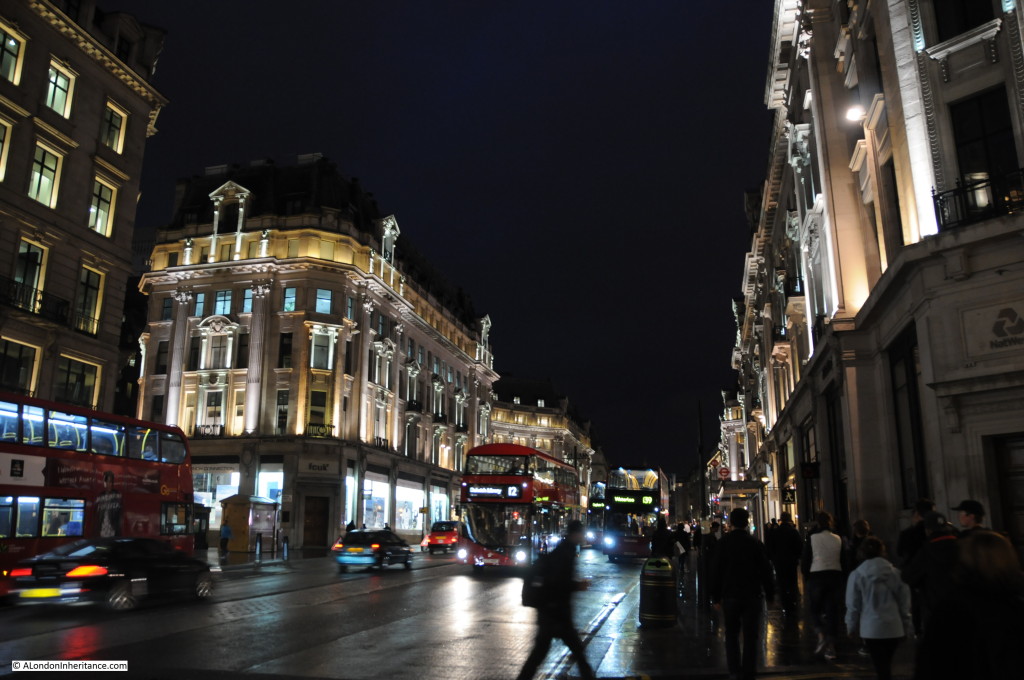 Regent Street is still lined with shops as it was in 1945, but the shops are now rather different than they were. Walk down the street now and you pass the status shops of global brands:
Regent Street is still lined with shops as it was in 1945, but the shops are now rather different than they were. Walk down the street now and you pass the status shops of global brands:

Shops with displays, variety and colour that would still have been a distant dream along the Regent Street of 1945:

Regent Street is well-lit, but on reaching the end of this part of the street, the brighter lights of Piccadilly Circus beckon:
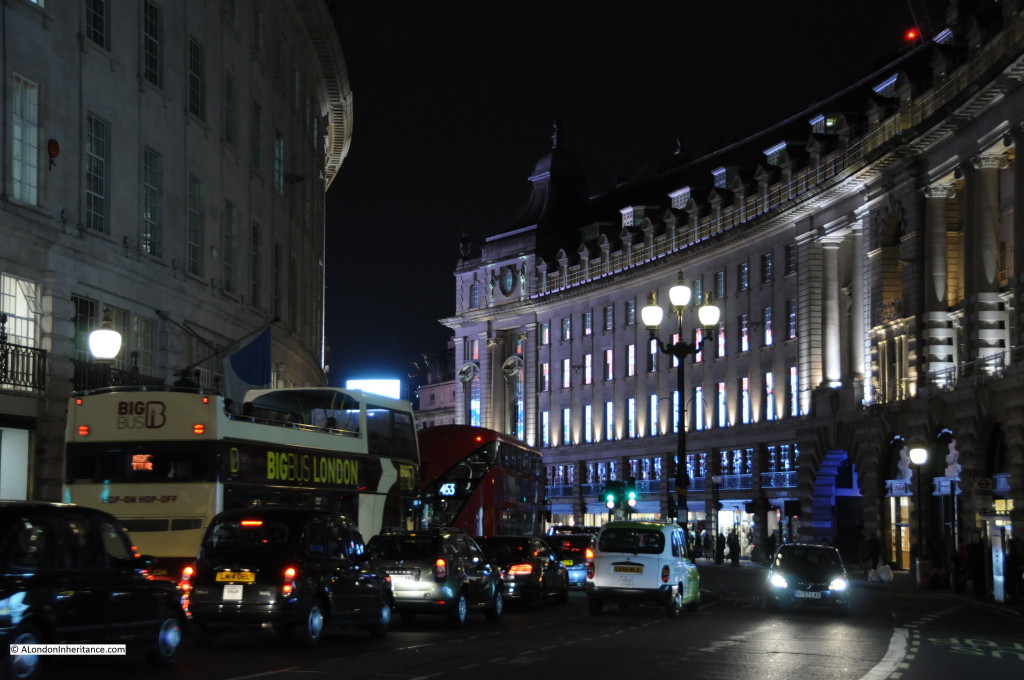 Piccadilly Circus is brilliantly lit at night and was one of the centres of celebration on the 8th May 1945. Late evening in 2015 and it is still busy, but nothing like the crowds my father was in, that were here in the same evening in 1945.
Piccadilly Circus is brilliantly lit at night and was one of the centres of celebration on the 8th May 1945. Late evening in 2015 and it is still busy, but nothing like the crowds my father was in, that were here in the same evening in 1945.
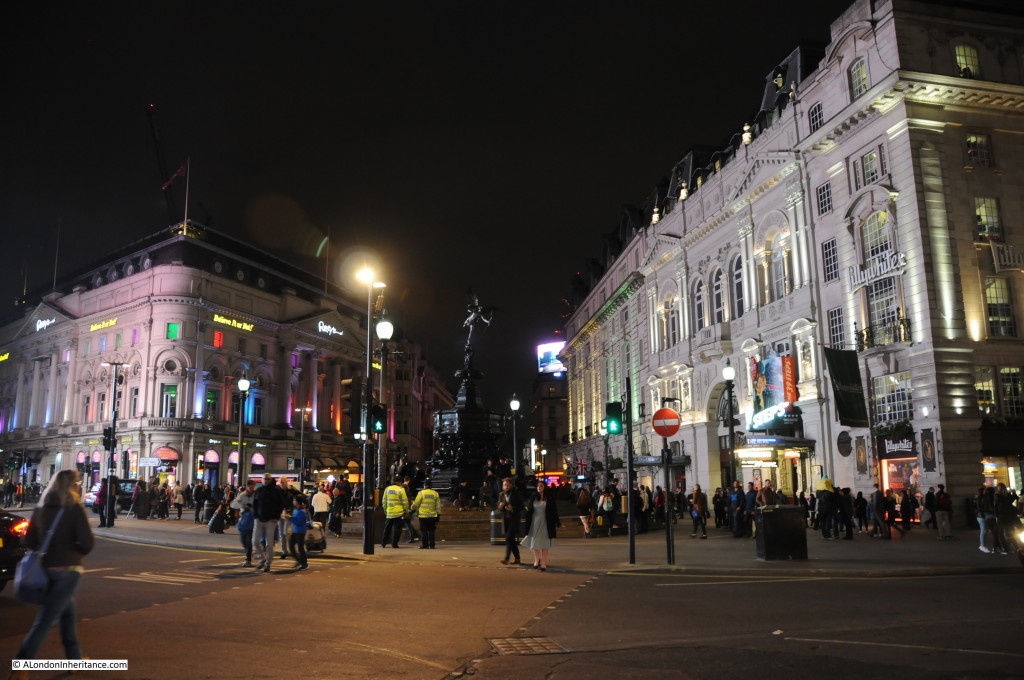 Eros as it is now generally known, or the Shaftesbury Memorial Fountain to use the original and full name is the focal point of Piccadilly, but sits almost in the shade of the surrounding buildings:
Eros as it is now generally known, or the Shaftesbury Memorial Fountain to use the original and full name is the focal point of Piccadilly, but sits almost in the shade of the surrounding buildings:
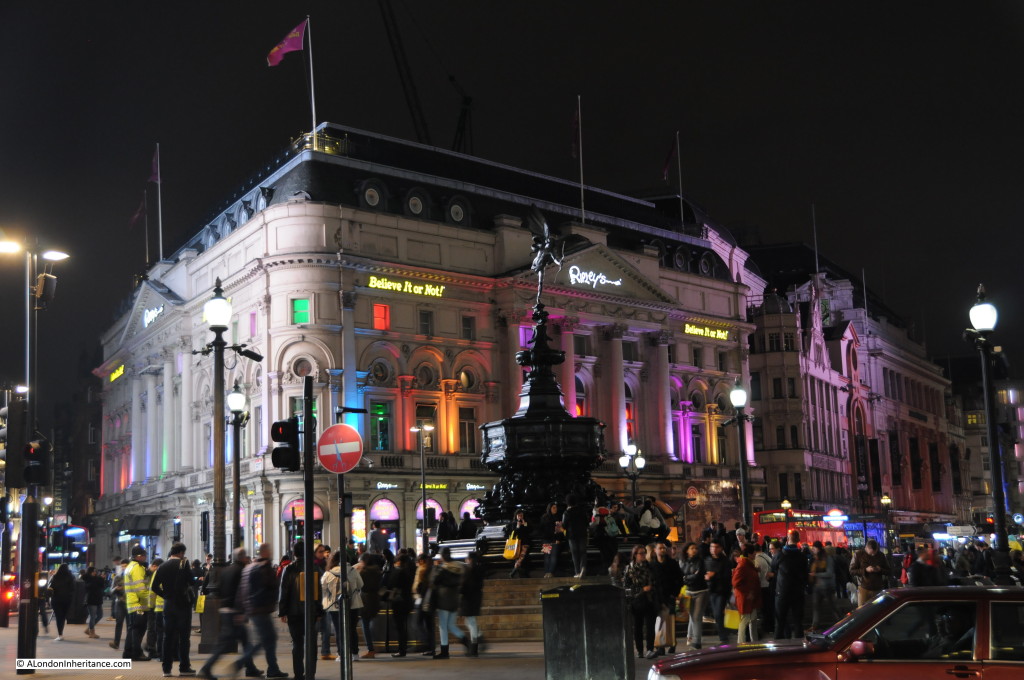
Illuminated advertising has always been a central feature of Piccadilly Circus:
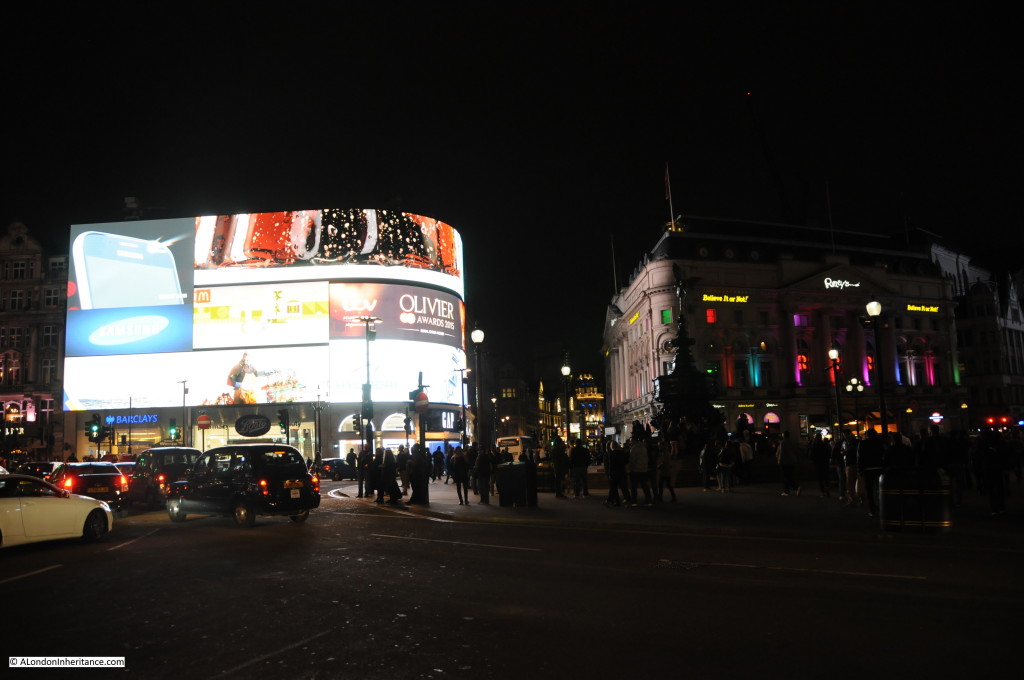 I followed my father’s route through Piccadilly Circus and down to the lower end of Regent Street to Waterloo Place.
I followed my father’s route through Piccadilly Circus and down to the lower end of Regent Street to Waterloo Place.
Waterloo Place is at the junction of Pall Mall and Regent Street and leads down to the 1834 column that forms the monument to the Duke of York. Much quieter than Piccadilly Circus and Regent Street.
Steps lead down from Waterloo Place to The Mall and I can imagine that in 1945 this was a far busier celebration route from Buckingham Palace to Piccadilly Circus.
Looking from Waterloo Place, up Regent Street to Piccadilly Circus:
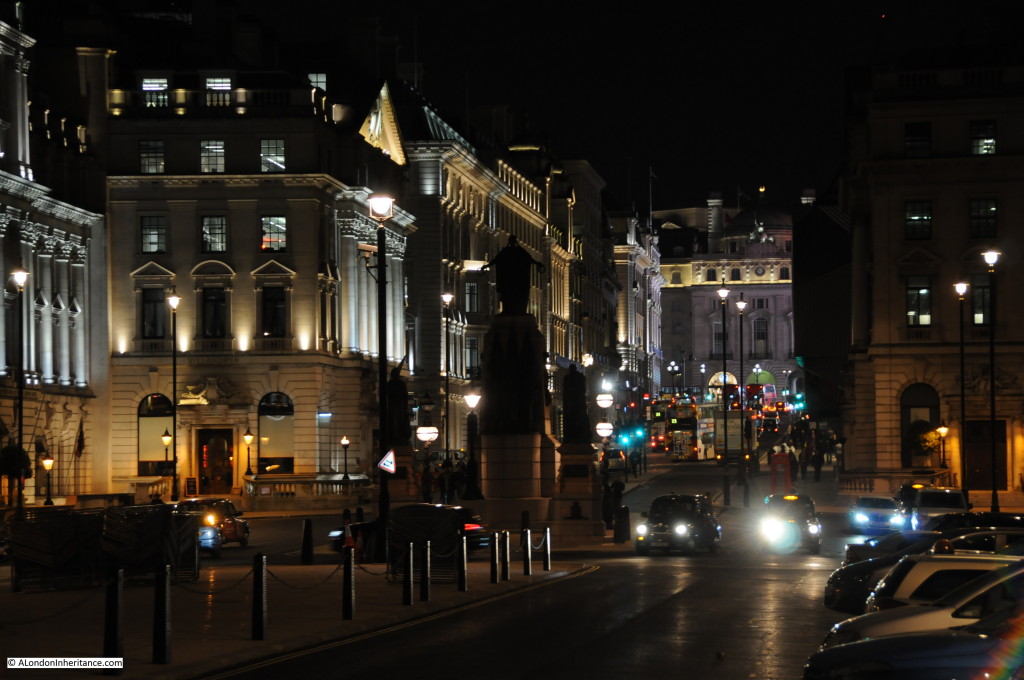
The Athenæum Club still faces onto Waterloo Place and as my father described in 1945 is still “painted a pale yellow colour and subtly lit” although on this 8th May the torches, which can still be seen around the 1st floor balustrade were unfortunately not lit:
 The Athenæum Club on the left with the Crimean War memorial in the centre of Waterloo Place, looking up to the bright lights of Piccadilly Circus:
The Athenæum Club on the left with the Crimean War memorial in the centre of Waterloo Place, looking up to the bright lights of Piccadilly Circus:
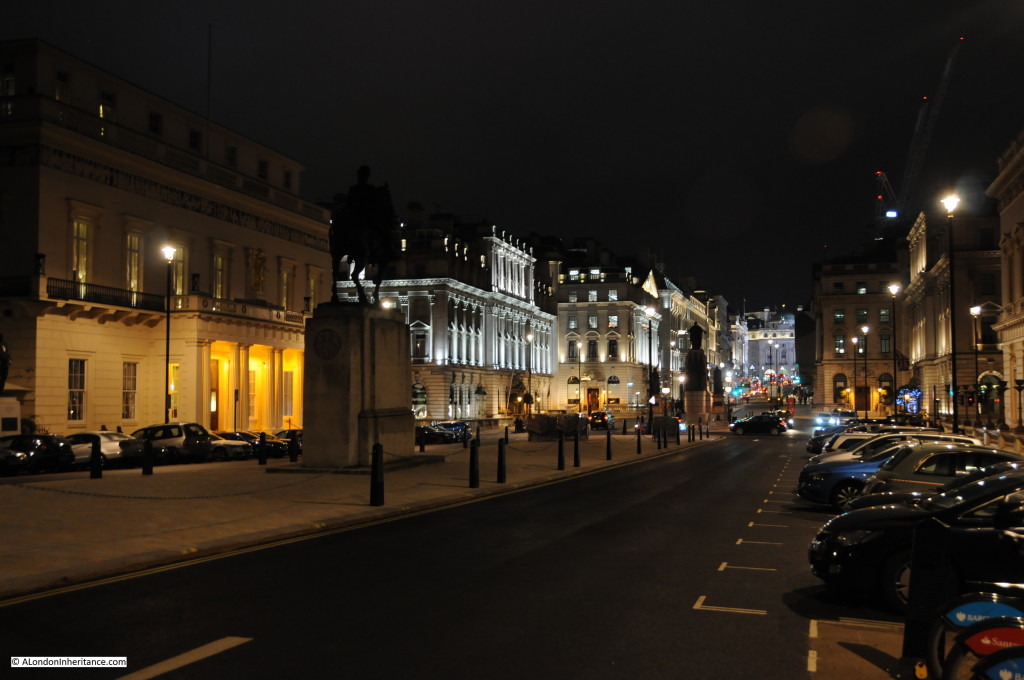 He did not say where else he walked on VE Day, but having been in Waterloo Place, there is a good chance that he probably walked down to The Mall and to Trafalgar Square, so I took the same route. Looking from the centre of The Mall towards Admiralty Arch:
He did not say where else he walked on VE Day, but having been in Waterloo Place, there is a good chance that he probably walked down to The Mall and to Trafalgar Square, so I took the same route. Looking from the centre of The Mall towards Admiralty Arch:
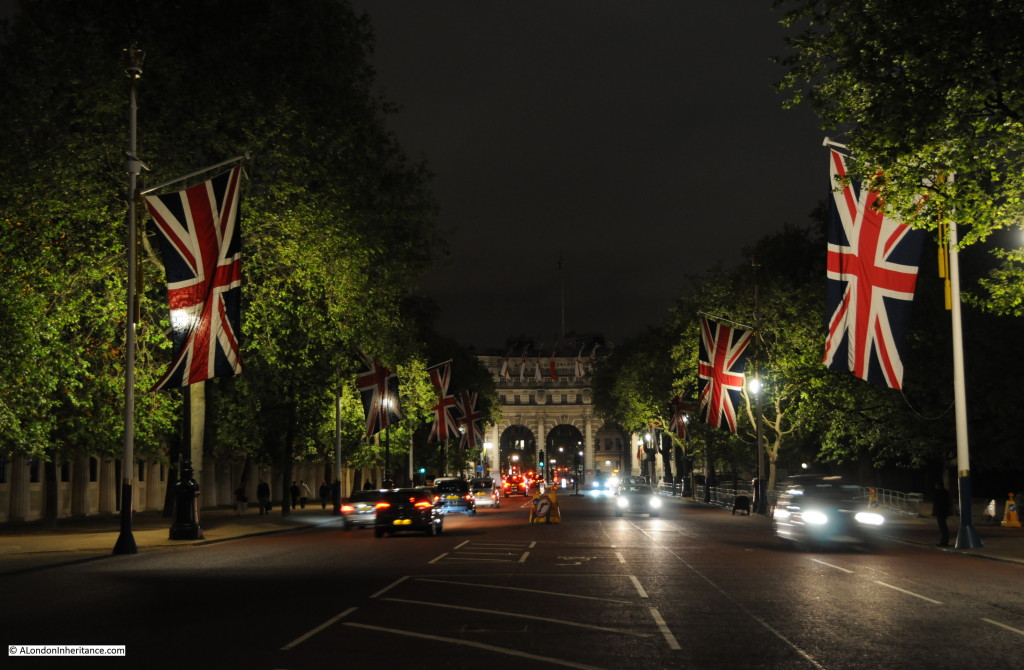 Flags on Admiralty Arch with the light from the searchlights in Trafalgar Square shining on the clouds. The searchlights had been set-up for the weekend as part of London’s celebrations of the 70th anniversary.
Flags on Admiralty Arch with the light from the searchlights in Trafalgar Square shining on the clouds. The searchlights had been set-up for the weekend as part of London’s celebrations of the 70th anniversary.
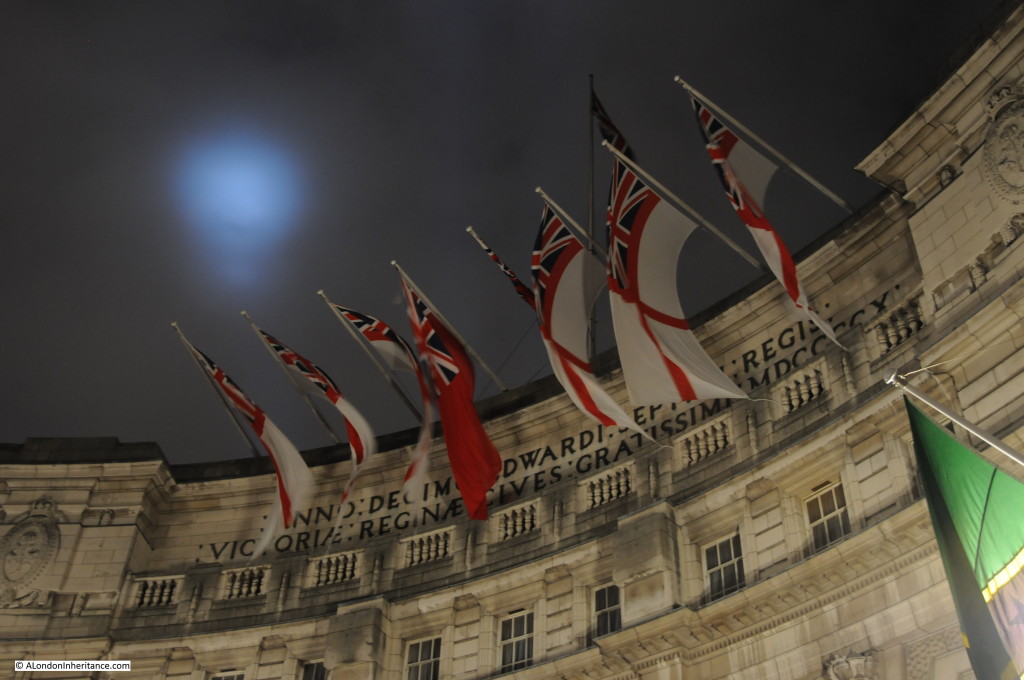 And in Trafalgar Square with the National Gallery in the background, the “V” searchlights pick out the top of Nelsons Column:
And in Trafalgar Square with the National Gallery in the background, the “V” searchlights pick out the top of Nelsons Column:
 After Trafalgar Square I took a quick walk down to the footbridge alongside Hungerford Railway Bridge to see if the “V” searchlights from St. Paul’s Cathedral were visible. The view along the Thames to the City from here is fantastic during the day, but takes on an additional dimension at night. 70 years ago, this view would probably still have been dark, although searchlights that had been used a few years earlier to pick out enemy bombers were being used that night to illuminate the Cathedral.
After Trafalgar Square I took a quick walk down to the footbridge alongside Hungerford Railway Bridge to see if the “V” searchlights from St. Paul’s Cathedral were visible. The view along the Thames to the City from here is fantastic during the day, but takes on an additional dimension at night. 70 years ago, this view would probably still have been dark, although searchlights that had been used a few years earlier to pick out enemy bombers were being used that night to illuminate the Cathedral.
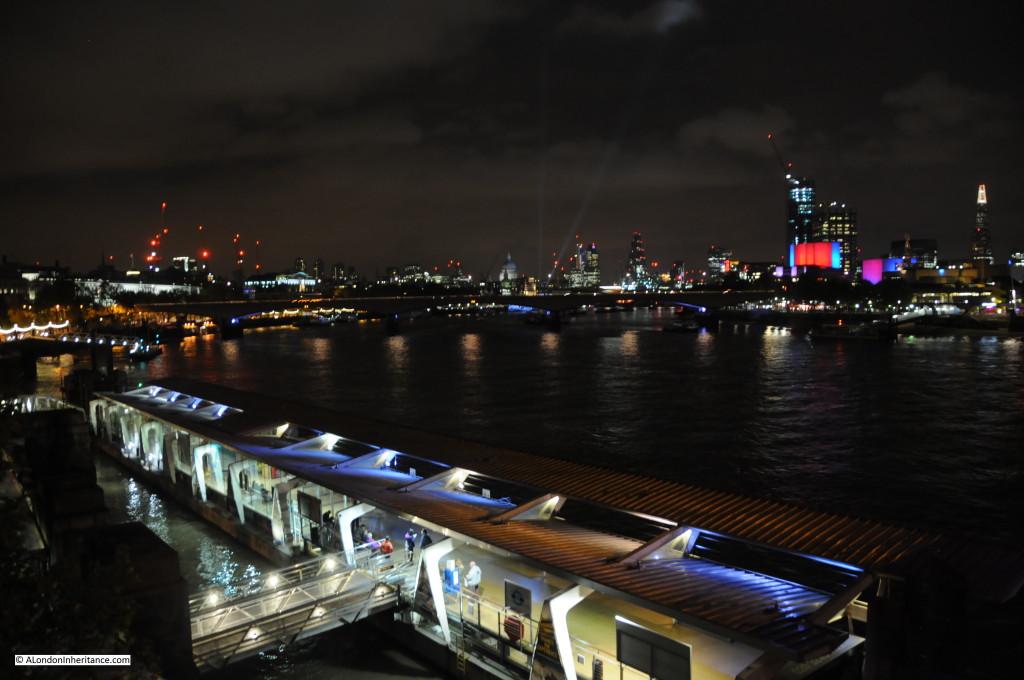 And a final close-up clearly shows the V searchlights from St. Paul’s Cathedral:
And a final close-up clearly shows the V searchlights from St. Paul’s Cathedral:
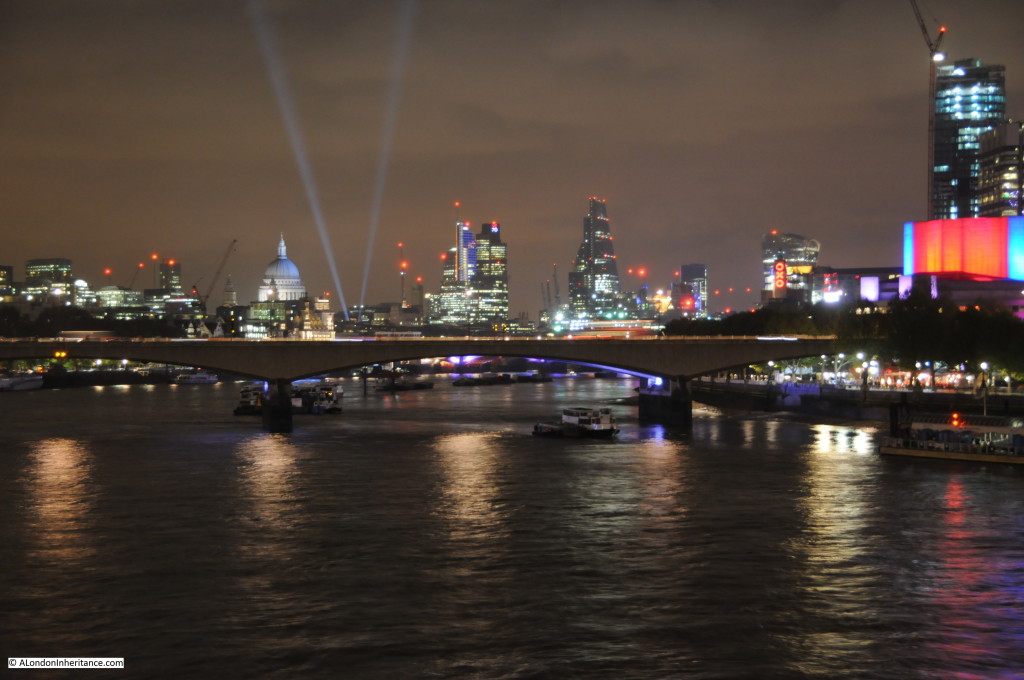 It was fascinating to walk the same route as my father and his friend Gus, exactly 70 years later and consider how London has changed. I was really pleased to find that the Chiltern Street Fire Station is still there.
It was fascinating to walk the same route as my father and his friend Gus, exactly 70 years later and consider how London has changed. I was really pleased to find that the Chiltern Street Fire Station is still there.
My father’s account of his life in London during the war was written soon after. The lack of much detail about VE Day itself, rather thoughts and concerns about the future probably reflect how many Londoners of the same age were feeling. After six years of war, the years of bombing, the V1 and V2, the threat to London had at last been removed, however the war in the far east was far from an end and National Service was imminent.
He did not take any photos on the night, as he did not get his first camera until 1946. When he did, one of the first photos was of St. Paul’s Cathedral lit up by searchlights. So, to finish off, this must have been how the Cathedral appeared on VE Day:

alondoninheritance.com

